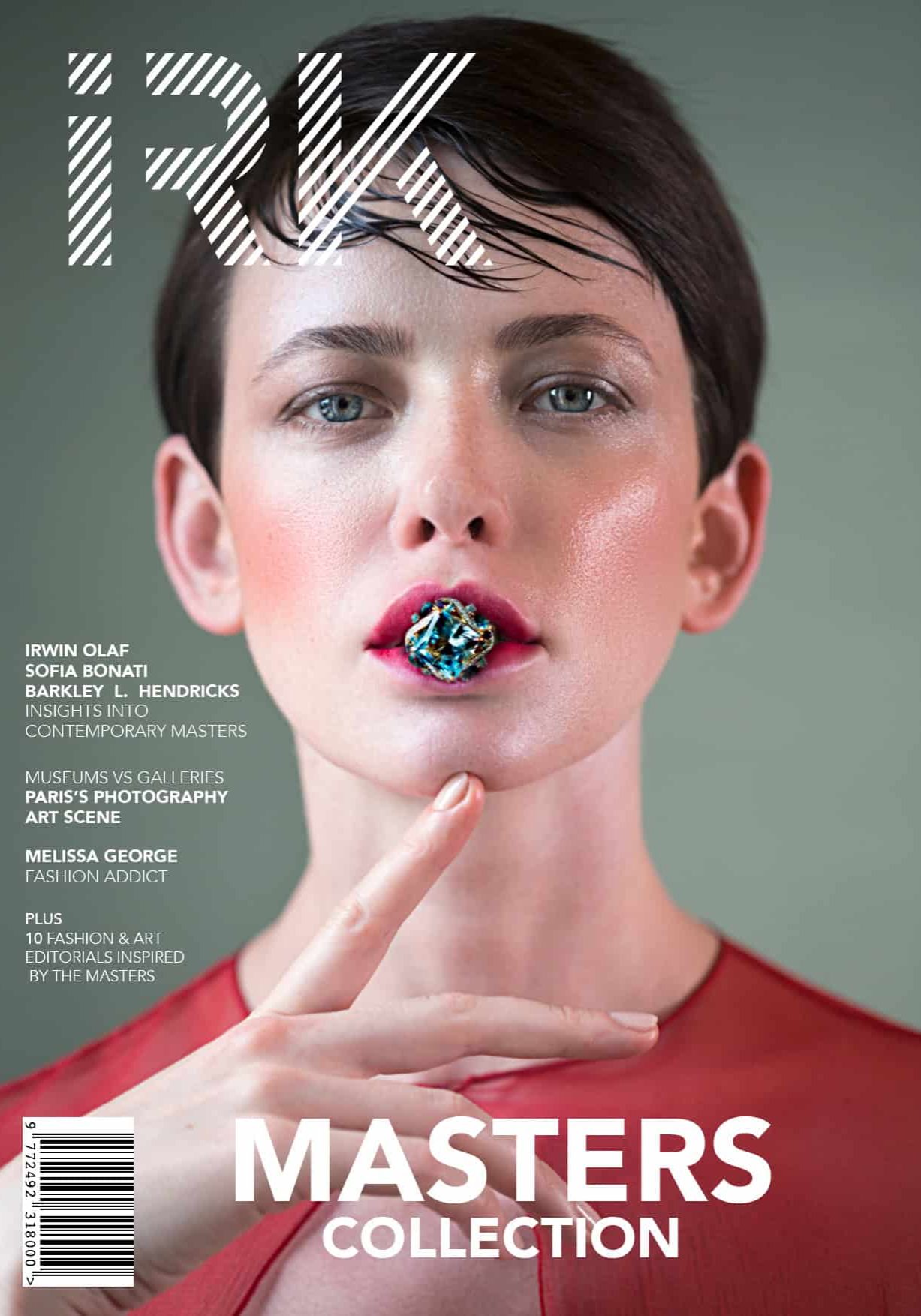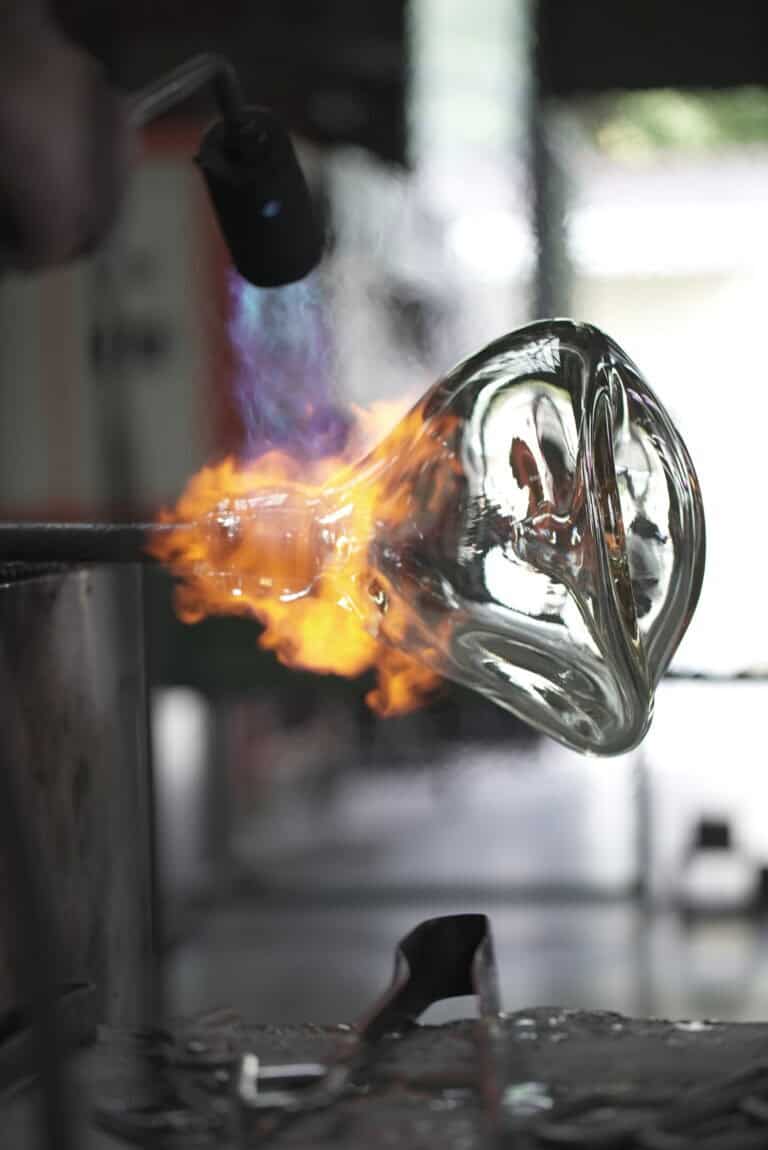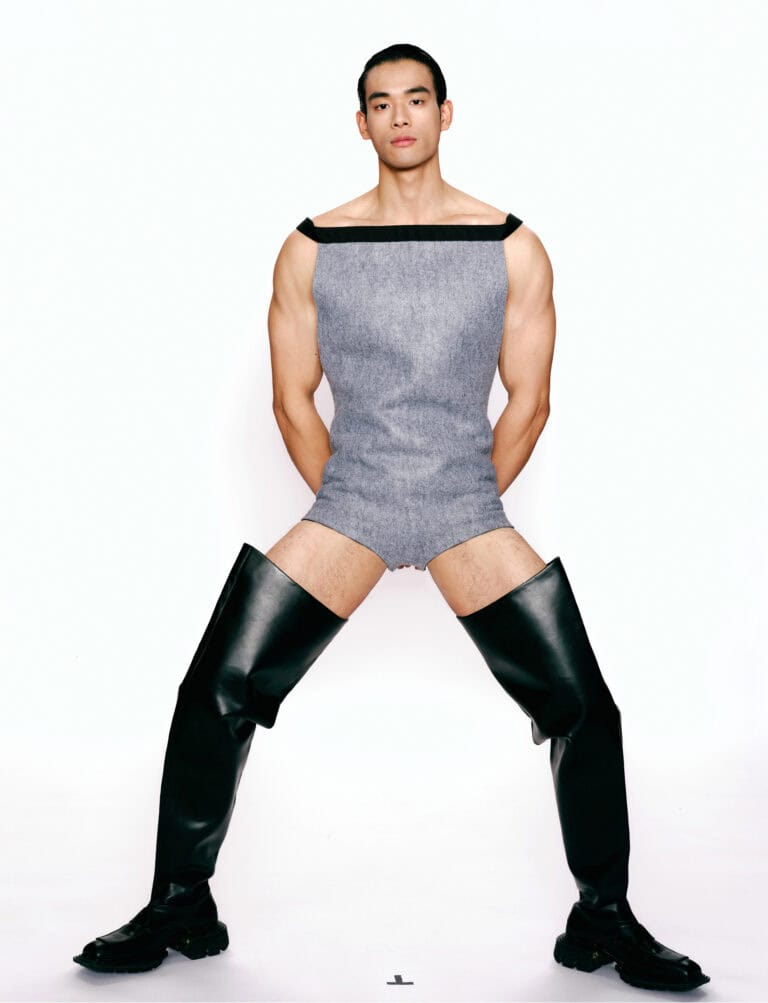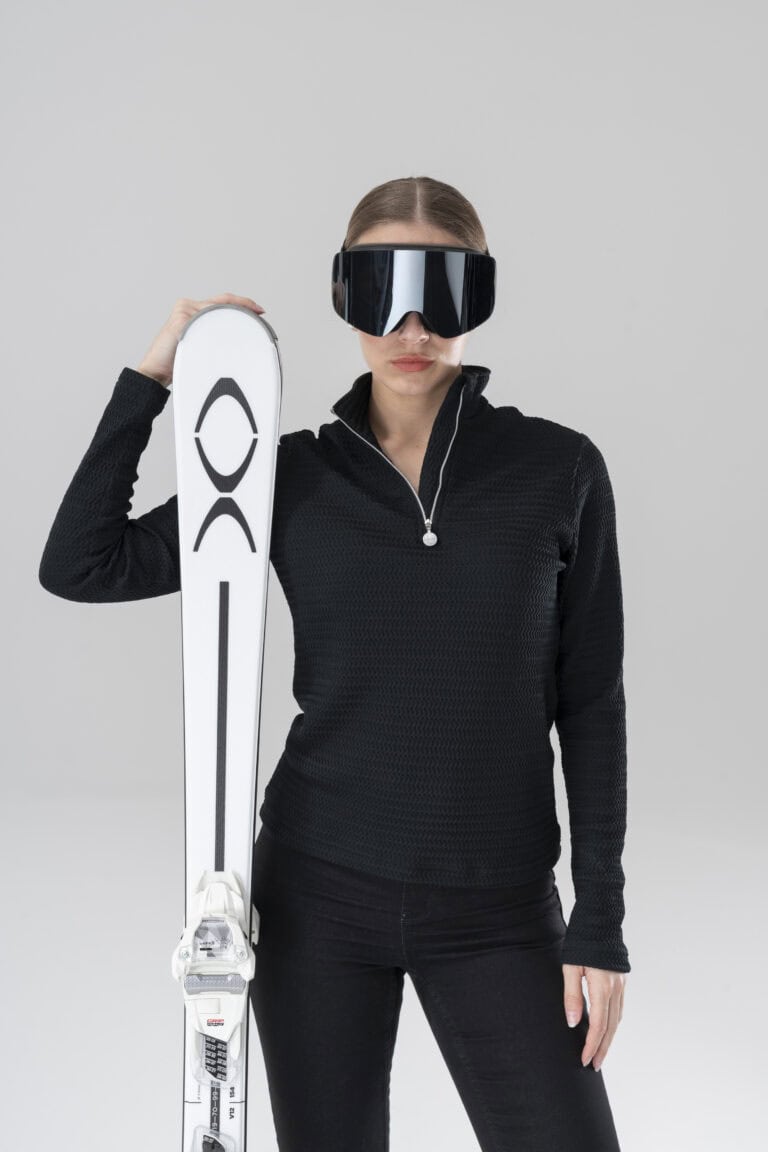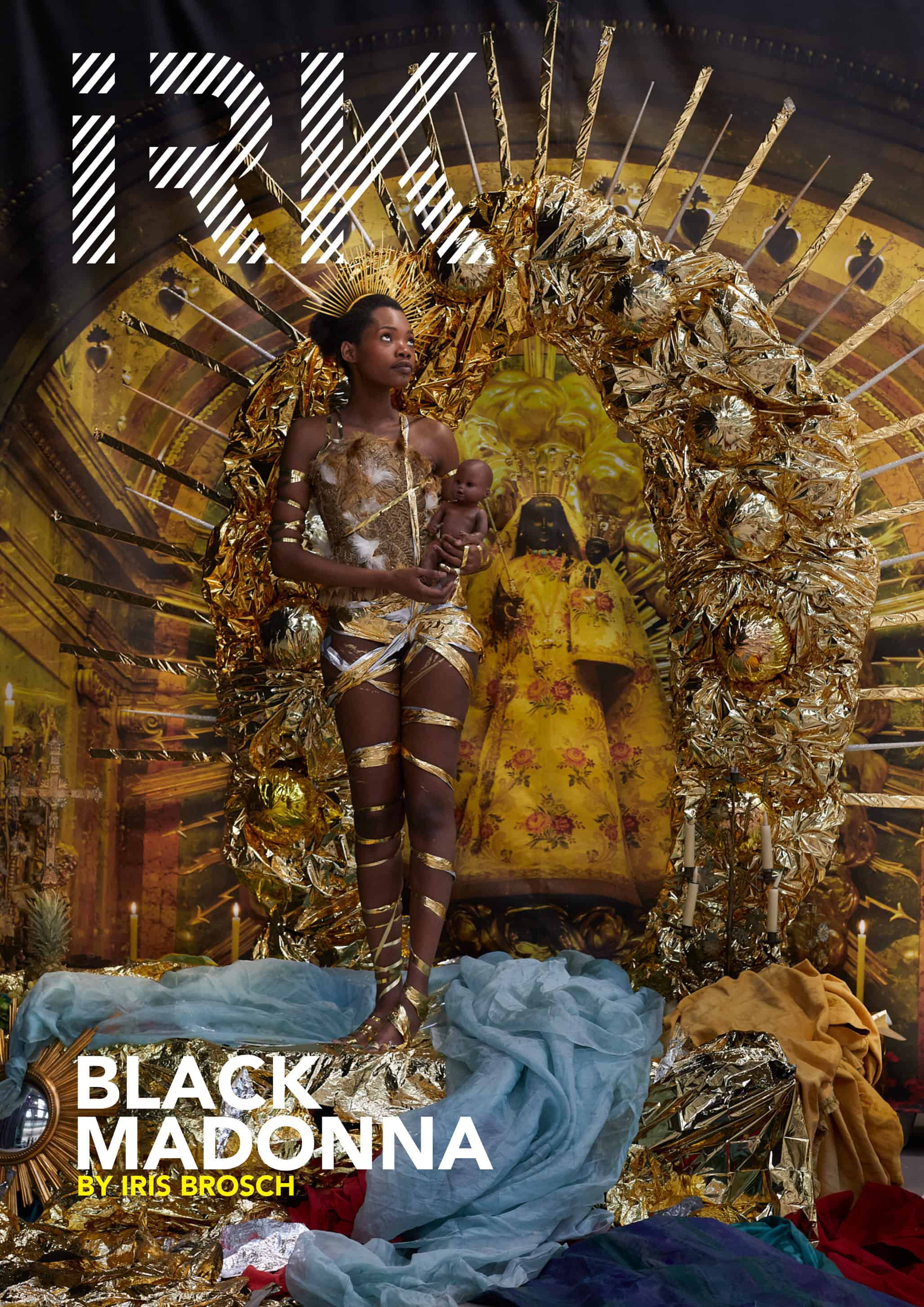
Black Madonna an Elevation of Humankind
IRK Magazine
Contemporary artist and feminist Iris Brosch uses the Black Madonna as a Tableau Vivant to honour women and specifically of colour as strong, spiritual and influential figures. The live performance “die schwarze Madonna” was held in Zurich at photoSCHWEIZ in 2022. In 2023 she was reinvited to photoSCHWEIZ to showcase the photo and video outcome in a multimedia installation.
Iris chose to recreate the Black Madonna, from the Holy Chapel of Einsiedeln. The confrontation with the old masters and the changeability of women are central to Brosch’s photographic work. She depicts women as heroines, expressive and powerful. The Madonna is reenacted by cultural activist Marieta Kiptalam the founder of Black Art Matters.
Iris Brosch is internationally recognized for restoring the dignity and strength of women’s images in photography. Her photographic style has been described as “Miuccia Prada meets Leonardo da Vinci”. Brosch’s singular celebration of female sensuality takes intriguing new turns in her ability to rework timeless classicism with a thoroughly modern twist. Iris Brosch’s artistic works are Raphaelian in nature, contemporary and mystical with the weight of a strong female mind at its core. Iris brosch is also renowned as a fashion and portrait photographer and has appeared in Vogue, Marie Claire, Elle, the New York Times, Harper’s Bazaar, and a variety of other international publications. She has also shot campaigns for Hugo Boss, Escada, Maybelline, Jaguar, John Richmond Perfume, Lancel, Virgin Records, Campari, and many others. Iris Brosch divides her time between Paris and New York.
IRK took the time to sit down with Iris Brosch to understand her compelling vision of feminism and to delve into her Black Madonna projects that address feminist issues that have existed throughout history. The Madonna as a feminist symbol raises a complex aspect of intersectional feminism. Because she is a maternal and feminine divine presence, the Virgin Mary can be both inspiring and comforting to some. Others may criticize the Madonna’s virginal motherhood, modesty, and obedience as patriarchal ideals that cannot be met. Read further to understand this complex work of art and its significance to feminist and humans alike.
“Die Schwarze Madonna” photoSCHWEIZ, Zurich 2022 by Iris Brosch
Where did you get the idea to create a Black Madonna?
As a feminist artist I am interested in the representation, perception and mutability of images of women. By giving attention to the Black Madonna I want to highlight the dignity and strength of women in our times.
When the founder of photoSCHWEIZ, Michel Pernet, contacted me to create an art performance for the annual exhibition in Zurich we were quickly intrigued by the idea to reconstruct the Black Madonna as a Tableau Vivant. Tableau Vivants are a way of artistic expression which I have been using for many years. With this way of performance we could transport the image of grace into the contemporary world. Having Marieta Kiptalam – the co- founder of Black Art Matters – as a center piece fully unfolded the spiritual potential of this tableau vivant. The diverse casting worshiping Mary shows the fluidity and particularity in spiritual experiences. But most importantly I wanted to use my platform to honour women as strong admirable figures and add to the representation of women of colour.
Why is the Madonna a powerful symbol for you and what does a black Madonna signify?
The Madonna is not only a powerful symbol of femininity and maternity but also an ubiquitous influential female figure in the history of Christianity. In my view especially among secular feminists the historical and cultural influence of the Madonna has been overlooked. I want to challenge this since I see a lot of power behind the idea of the Madonna to shape perceptions of women and attitudes towards them.
The Black Madonna in Einsiedeln opened my eyes for a paradox reality: While she attracts millions of admirers, believers and pilgrims who face her in devotion, women of colour are still vastly underrepresented in the political and cultural realm we experience today. So I see the spiritual success of the Black Madonna as an impactful symbol associated with divine power and femininity.
Overall I would like to see this admiration and valorisation for all of womanhood, above ethical, cultural, and socioeconomic backgrounds and independent of age.
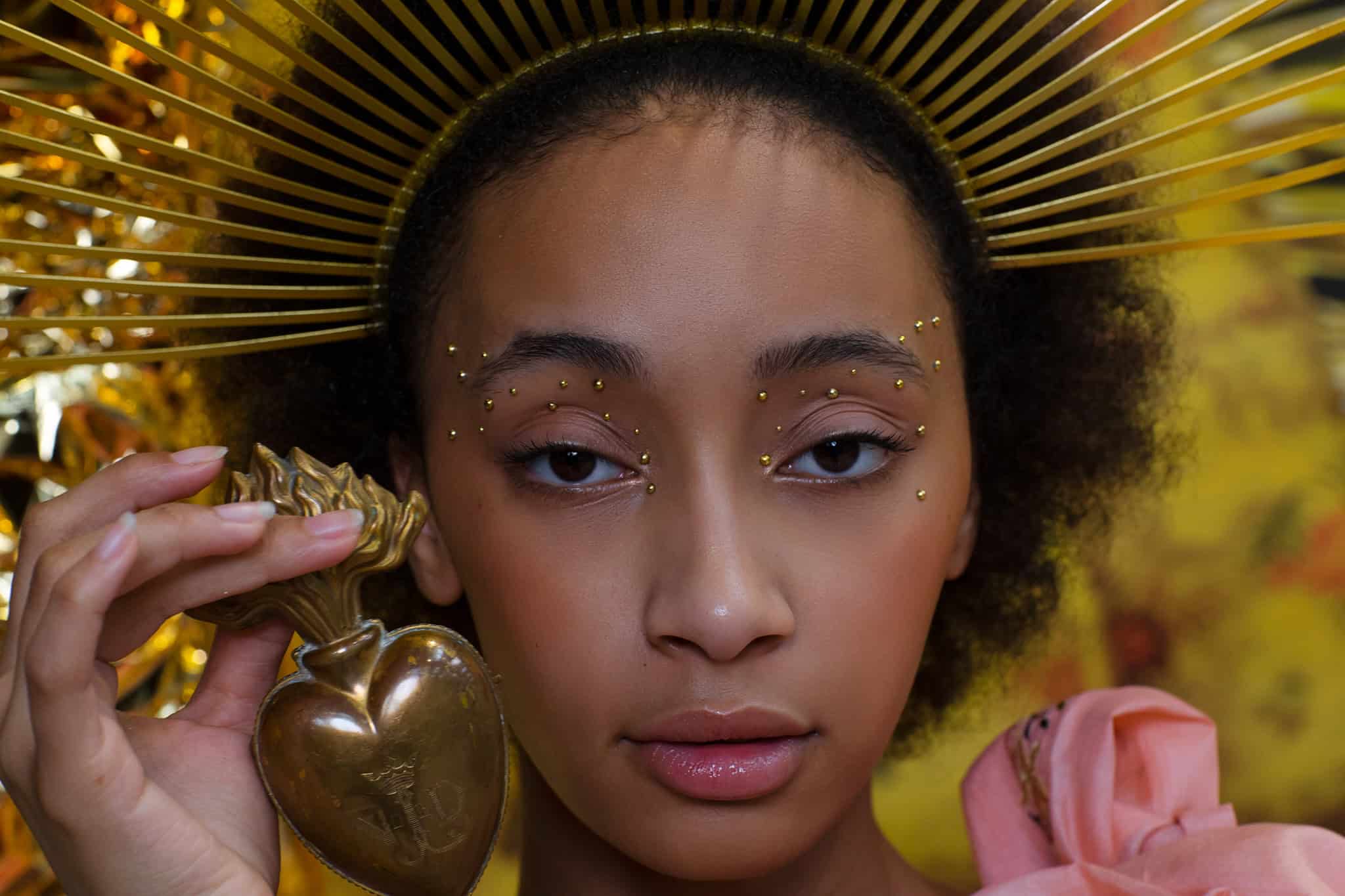
Do you think the black Madonna and child is a symbol of black lives matter?
A connection can definitely be made. However, Black Lives Matter as a worldwide movement was founded in 2013 and is thus a lot younger than the tradition of the Black Madonna. The types of black divine figures goes back to antique cultures which makes the Marian tradition including the Black Madonna rooted in a narrative going back thousands of years.
While the Black Lives Matter movement focuses on concrete systematic racism and protests against police brutality, I perceive the Black Madonna more active as a spiritual and sociocultural phenomenon which is deeply rooted.
The Black Lives Matter movement evokes and protests images of police brutality, George Floyd gasping for air, fear, and male violation of the human being. When I think of the Black Madonna I feel elevated. She is female- focused, a source of enlightenment and power. She holds a child, presenting us the next generation and making us think of the future and what it holds.
But yes, finally both aim to increase space for people of colour in society. Overall there is nothing natural about using skin colour as markers of difference. This categorisation is an abuse to associate characteristics with each other. The way I see it is that all human blood is red. This dichotomy of black and white and race overall is a concept which evolved alongside colonialism – it is therefore relatively new and man-made. Unfortunately our male system seem to have this tendency to create out- and in-groups to classify and control us. This limits our human capacity to be united and powerful together. That’s why I try to break old stereotypes of deep rooted cultural ideas. In a feminine figure with a spiritual impact such as the Black Madonna I see great potential to connect people and break man-made boundaries.
The Black Madonna is embodied by the Zurich cultural activist Marieta Kiptalam. Can you tell us why you chose Marieta?
Marieta is a cultural activist and co-founder of Black Art Matters (https:// blackartmatters.com/). She stands up for humanity and equality of all human beings, which are values we both share and aim to represent in our work.
Marieta herself has a lot of knowledge about Einsiedeln, where the Black Madonna is situated. There is a strong spiritual energy radiating from her which turned our performance and Marieta as its key figure into a unique and incomparable experience. In the process we fused our energies. The devotion by the models and people surrounding us turned the performance into a momentum where the Black Madonna became alive. It was as if we had reached a new dimension of spirituality. A model later said she experienced an incredible release of energy when she touched Marieta which changed something in her.
I think it was also a new experience for Marieta. By revitalising the image of grace of the Black Madonna she devoted her body to narrate from a past and present life. I felt the release of an unknown intensity, which was manifested by a lot of sweating and heat on both sides – in front and behind the camera. I want to thank Marieta for her trust and that we could experience a new level of consciousness together.
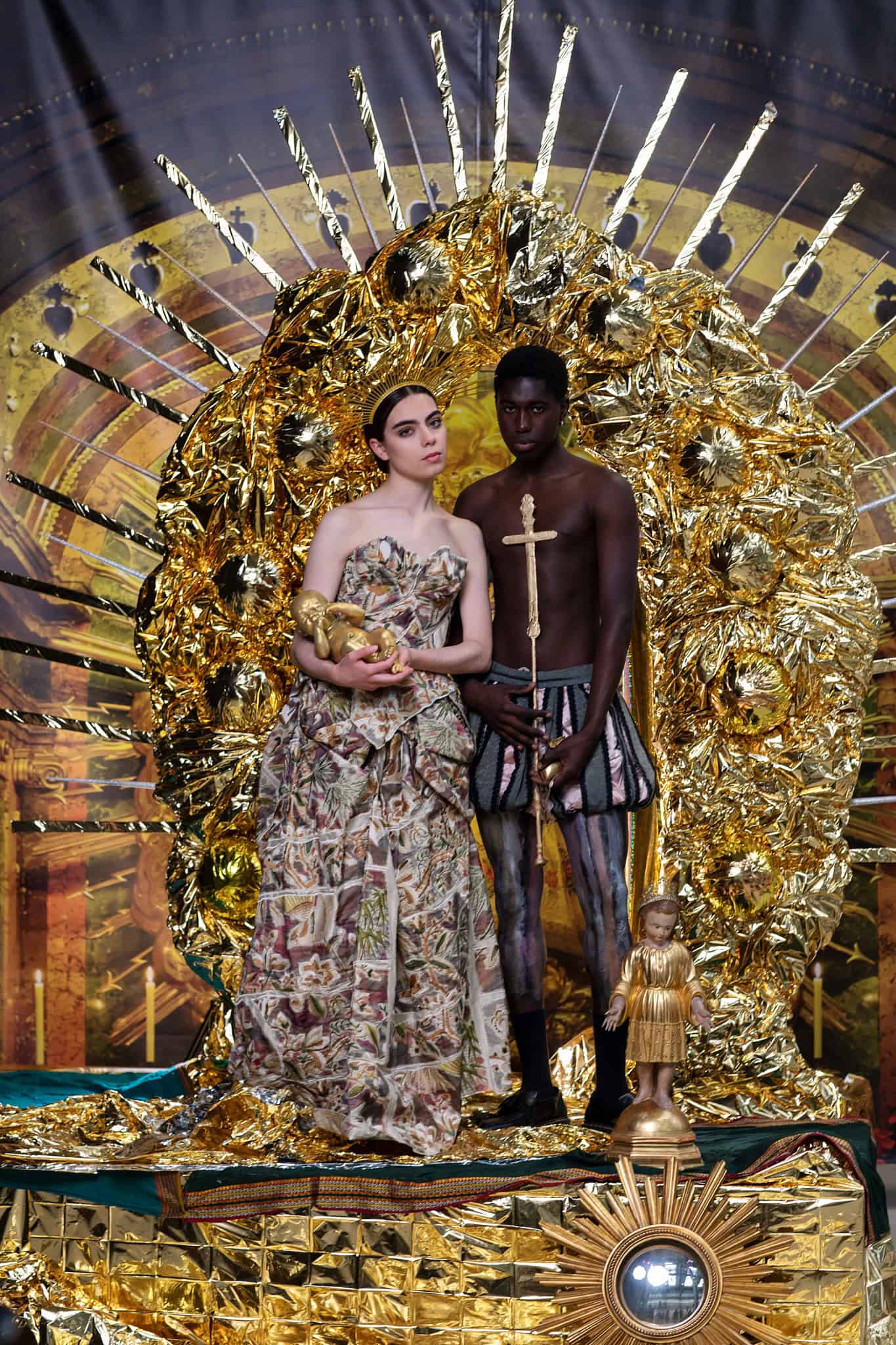
The speculations behind the reason for the historical black Madonnas’ dark hue of each individual icon or statue vary greatly and are not without controversy. What do you choose to believe?
I’ve encountered explanations from comparative religious studies, feminist theology, analytical psychology, and traditional Christian theology, as to why her skin is of dark colour. Some parties say that her hue changed over the years due to the discolouration of candle and smoke or restoration.
In fact this multitude of speculation is not what I am interested in. What stands out to me is that we don’t demand explanations when there is a White Madonna. We do not speculate if someone bleached her skin. White images and personas are so represented that we hesitate to question them! What I am interested in therefore is what I see: A Madonna carrying her child, both of dark colour, who fills our churches with admirers to this day.
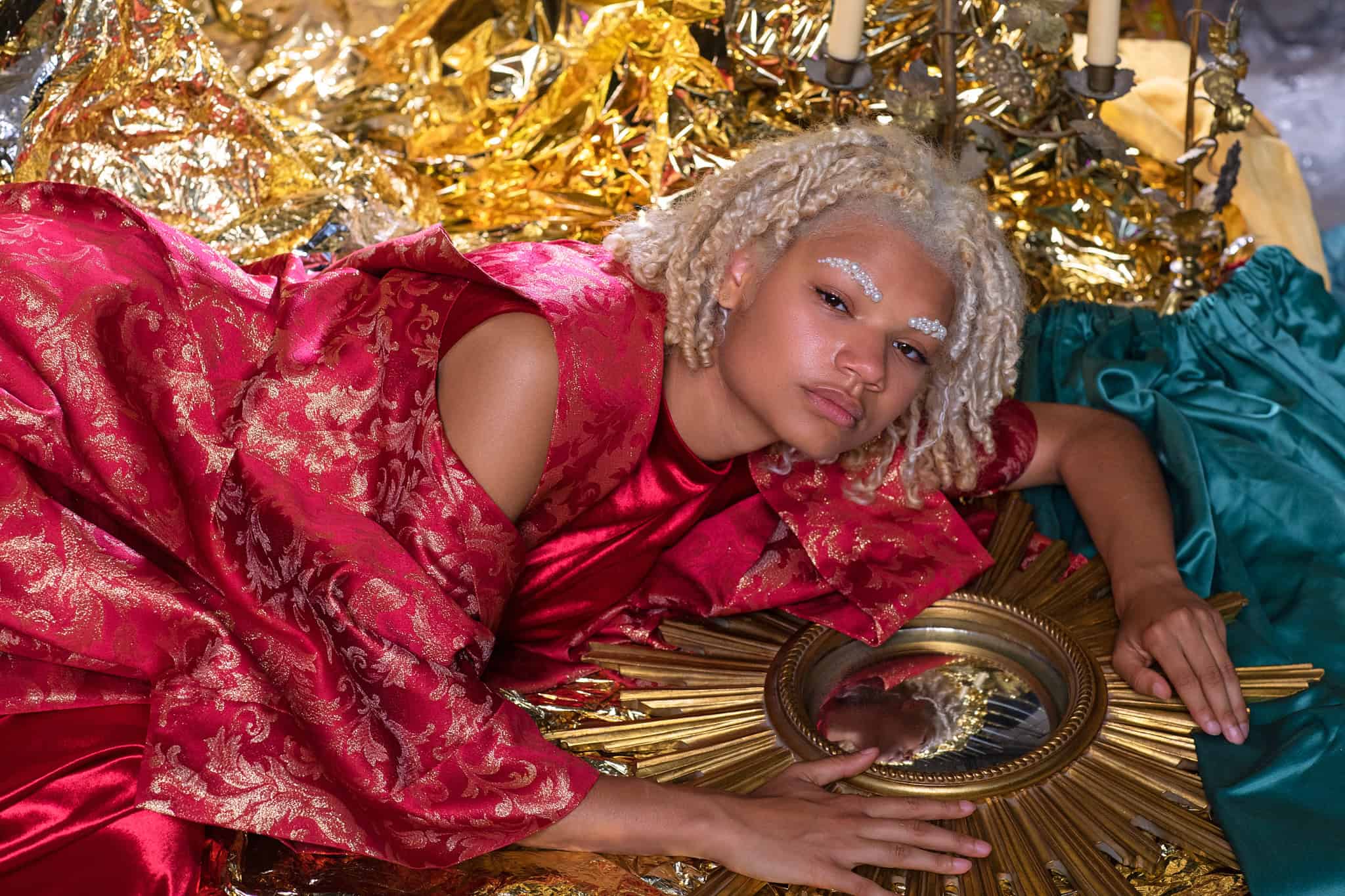
Madonna is a heroine in fact and worshiped and loved by many. Do you consider Madonna a femenist symbol?
This question opens up a complex aspect of intersectional feminism. As a feminist who is western-elevated and -educated I assume my perspectives to partially differ from women with different religions, identities and orientations. I can imagine that the Virgin Mary can be inspiring and consoling to some, as she is a maternal and feminine divine presence. At the same time others might criticise the Madonna’s virginal motherhood, modesty and obedience as a patriarchal ideal which cannot be met. Overall I consider the devotion to Madonnas to add to feminist spirituality and I hope that my work can reveal that women all over the world are their own Madonnas worthy of admiration.
What we can observe is that the Madonna is often represented with a child, the child of god. She combines two incommensurable identities: she is a mother and virgin at the same time. She reminds people of a theological virtue placing high value on purity which has been patriarchally associated with virginity. We can also see this virtue represented in her clothing, often wearing the colour blue. This colour symbolises royalty, virginity and purity.
A Madonna is associated with so many things but always distanced from sexuality. She has a child but no intercourse. Her sexual power as a woman has been removed. This imagery in Christian iconography gives only power to women when removing one of their greatest: sexuality. Giving birth becomes a mystery and gift, rather than a female power which men cannot exercise. Of course churches are empty if you try to feed such a mystifying story to a more and more feminist society. We need icons who are real and present new perspectives so women feel represented and see that their bodies and sexual pleasure beyond fertility are powerful.
You often concentrate on the masters to create your performances. These masters being men, are you somehow reinventing history to make women more powerful?
Male masters have for sure dominated not only in the art world but overall in the history of mankind. This male dominance created a canon where male voices are repeating and building up on each other. I think it is time and necessary to add a female perspective to our future to not repeat the same melodies created in the past over and over.
I believe that the future is feminine, if not there will be only death !
This project involved many creative people. Do you enjoy the creative process of collaboration? (can you mention two of the creatives)
I am very grateful to be working alongside other creative minds. Surrounding yourself with other people and their perceptions of creative processes opens up enriching dialogues and inspires me. In this project I especially enjoyed collaborating with Barbara Staib, an architecture designer whose work and personality have been inspiring me for more than 15 years. Further there was Peter Pfund who built the set to create the visual ambience of Kloster Einsiedeln. And most importantly my producer, set designer and art director Stephane Blanc. He’s been following me for almost two decades and has supported all art projects. Without him this and other projects would not have been created.
It is for the collaborative work of everyone involved that the Black Madonna project became as special as it was.
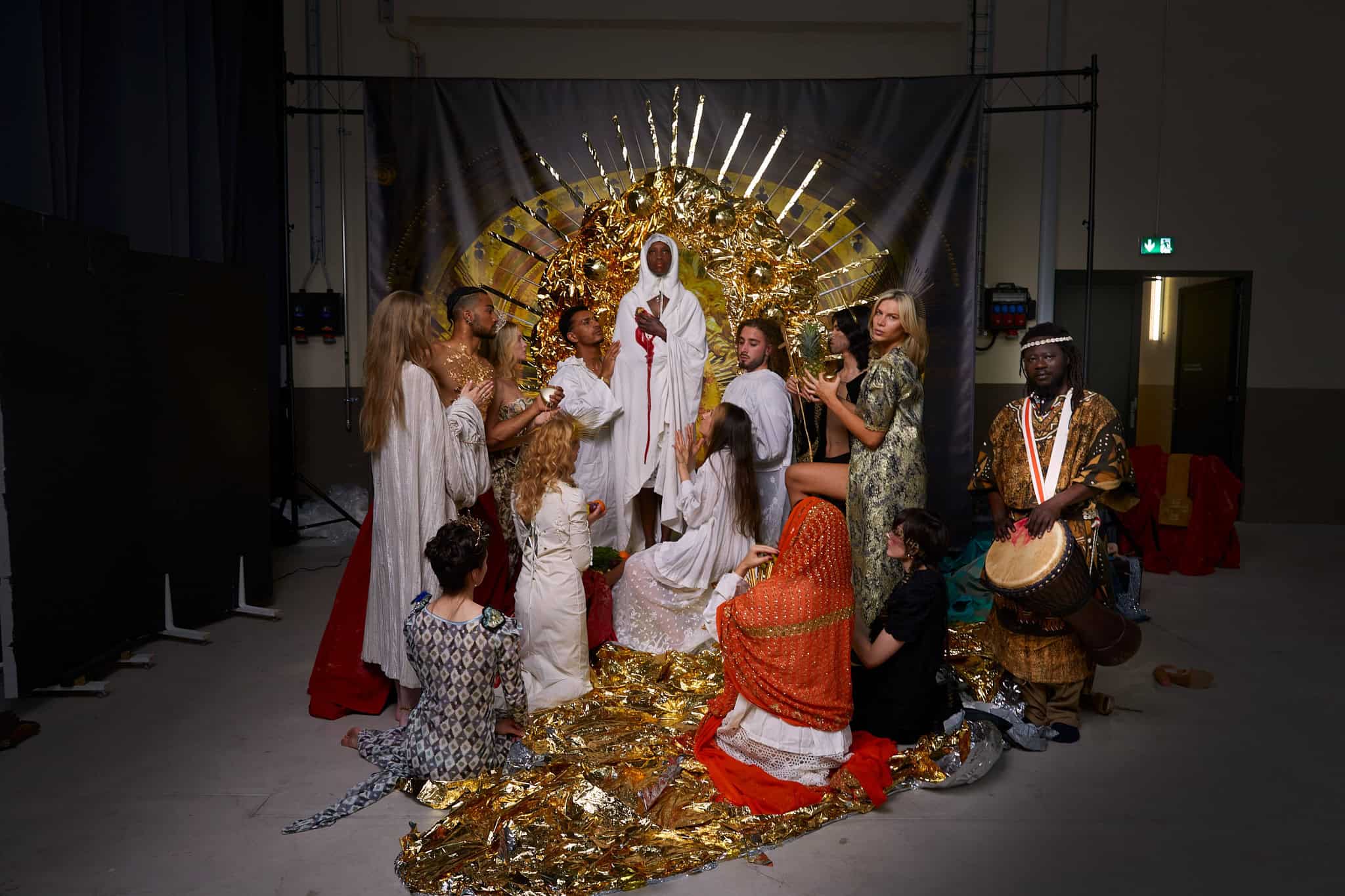
How did you get Photo Schweiz involved in your project?
Photo Schweiz is an annual exhibition with thousands of visitors in Zurich, Switzerland. More than 250 photographers exhibit their work. I decided to open up my Tableau Vivant for spontaneous interaction with the diverse audience: Apart from the casted models I also included visitors of the exhibition to experience the energy which was created throughout the performance. We used the area inside and outside of the exhibition hall to let the performances unfold naturally.
French Haute Couture designer FRANCK SORBIER made the gowns worn by your Madonna. How did you meet him and do you often collaborate with Mr. Sorbier?
Franck Sorbier is the Maître d’Art amongst fashion designers and I am proud of our collaborations which have been going back for several years already. There only exist 14 designers who carry the label of Grand Couturier – Franck is one of them. He was even awarded two honorary titles by the Government of France. Franck has a great understanding of influential trends and conducts deep research for his creations. His great understanding of Christian iconography was very important for an art project such as the one of the Black Madonna.
Thanks to your illustrious career as a fashion photographer for all the greatest designers and magazines worldwide do you often collaborate with designers, fashion models etc. to create your more artistic creations?
My background is in fashion and advertising where I started my career as a model and then photographer. I worked for all types of magazines and customers including Vanity Fair, Heidi Klum and Claudia Schiffer.
In the last 15 years I have been developing a new art form called PHOTO PERFORMANCE, where I transport various types of images into real life, while including the public. Like this I end up with not only the final result of a photo, but give partakers the experience of being included in the creation as a whole. I like to create a group of models and other individuals who just happen to witness the performance to then be included. This gives them the feeling of being a star, like someone who you usually only see on covers of magazines. This way of interaction is something me and the other individuals included value a lot, since the digital revolution has changed the was fashion magazines are created and distributed.
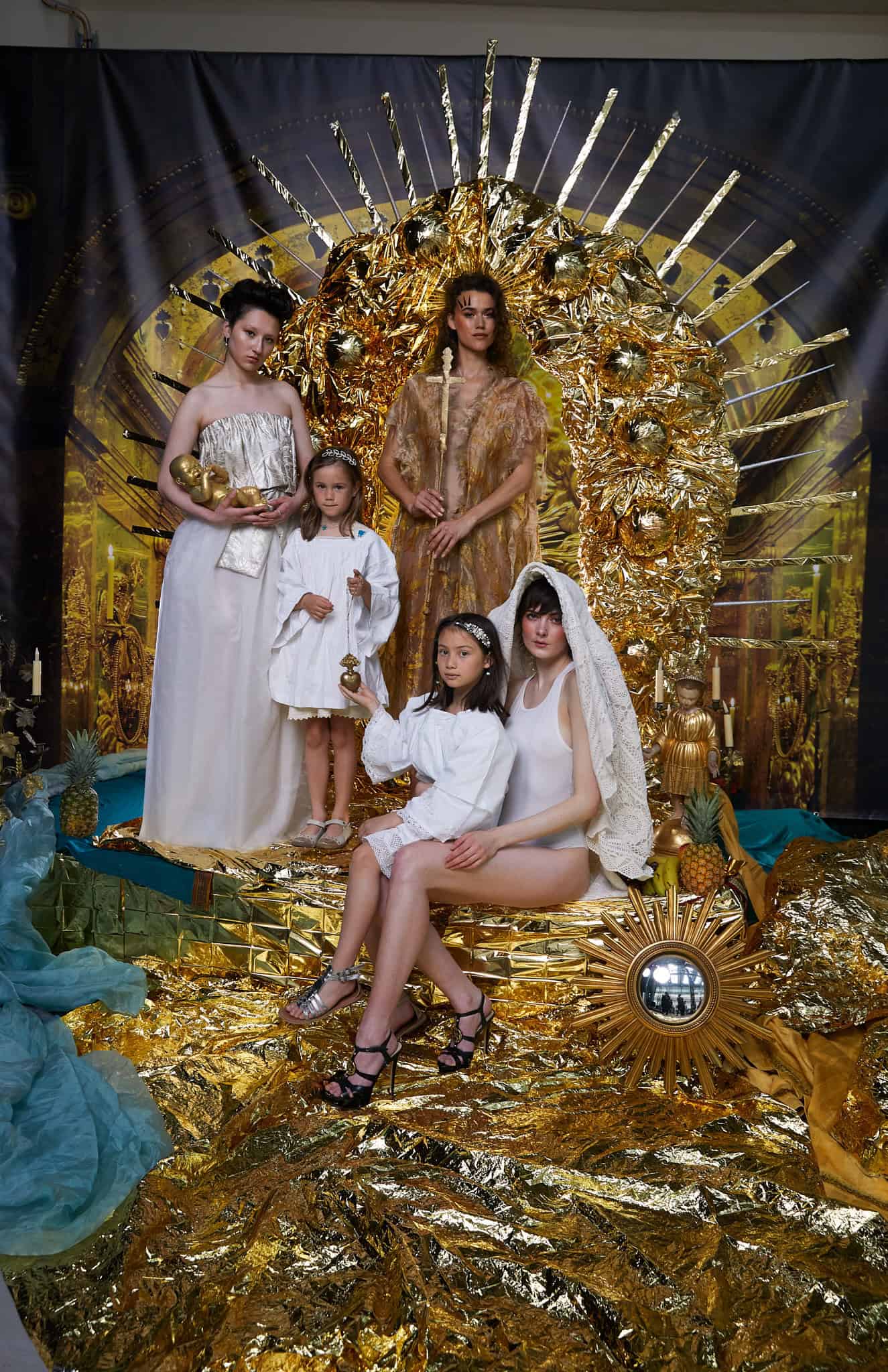
What was the reaction of the audience to your performance?
I think they enjoyed seeing the creation of a new world. At the end of the day it is all about the energy they experience. The spectator is not only someone on the outside watching but also and important part of the performance itself. All energies are fusing. Everybody is invited to share their part. When the Black Madonna became alive through Marieta, I felt that everyone was feeling great awe and admiration. They kneeled in front of her and honoured her.
If you had to describe the performance in one word what would it be and why that word?
Powerfull !!
Will the Black Madonna be shown elsewhere?
For photoSchweiz 2023 I created a multimedia installation which was portraying video and photo material captured during the Tableau Vivants in May 2022. I embedded this material in an equally opulent set where feminism, faith, future and technology collide. This multimedia installation is a piece for itself and prepared to be exhibited elsewhere, so you can stay tuned!
We are open for all kinds of exhibition spaces and cultural spaces to expose it more. Just like the pilgrims towards the Madonna, the exhibition should travel.
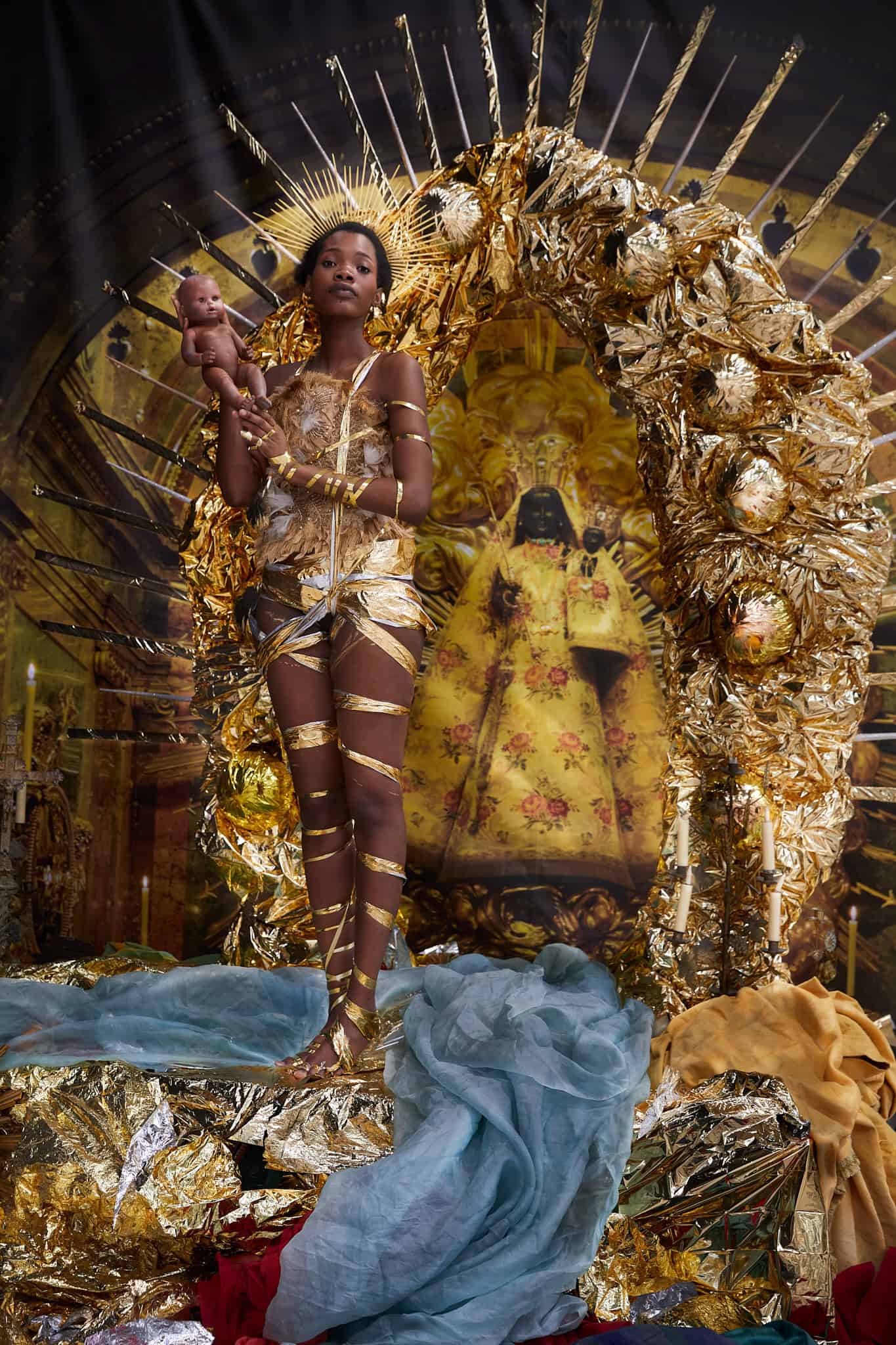
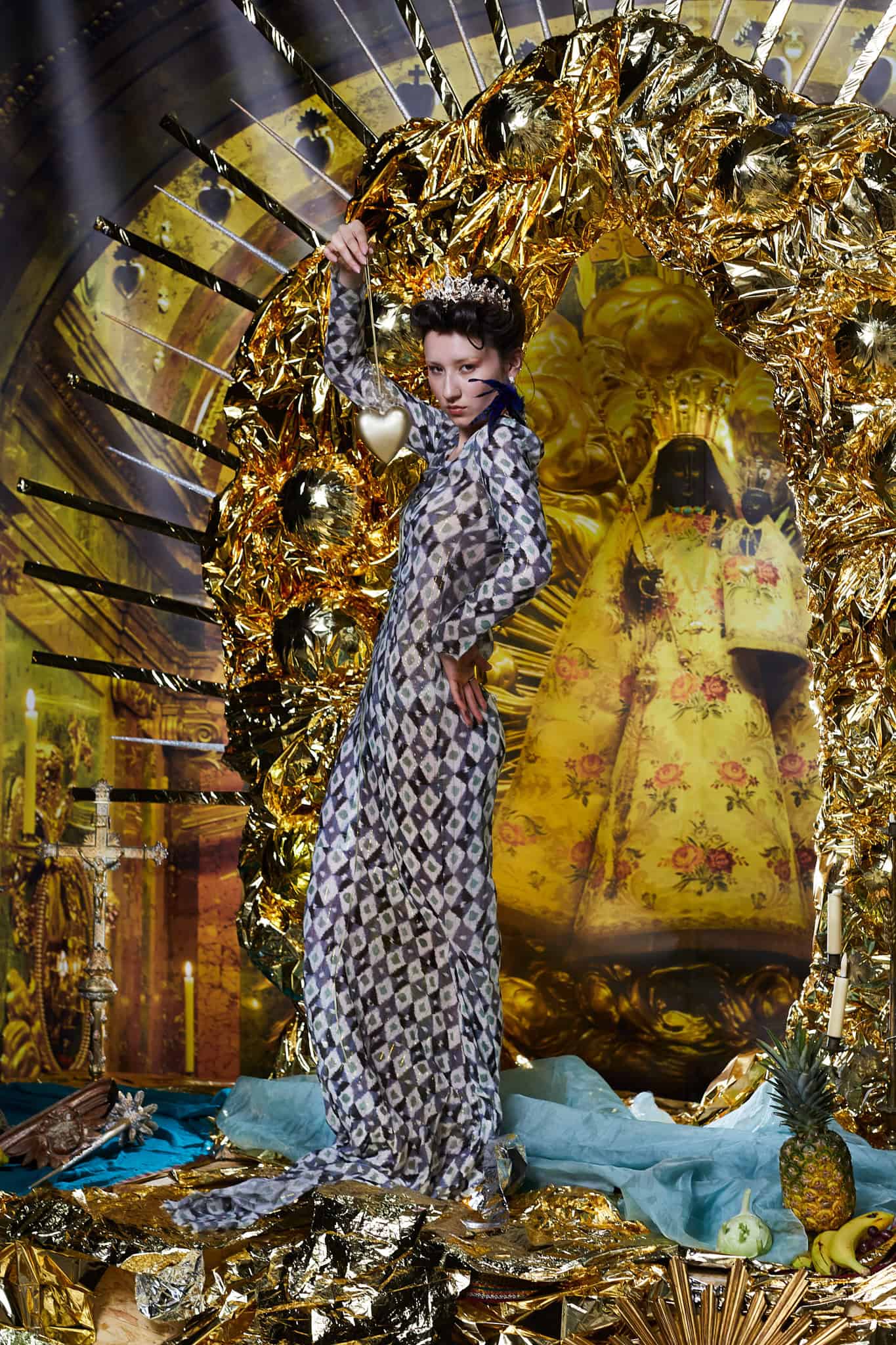
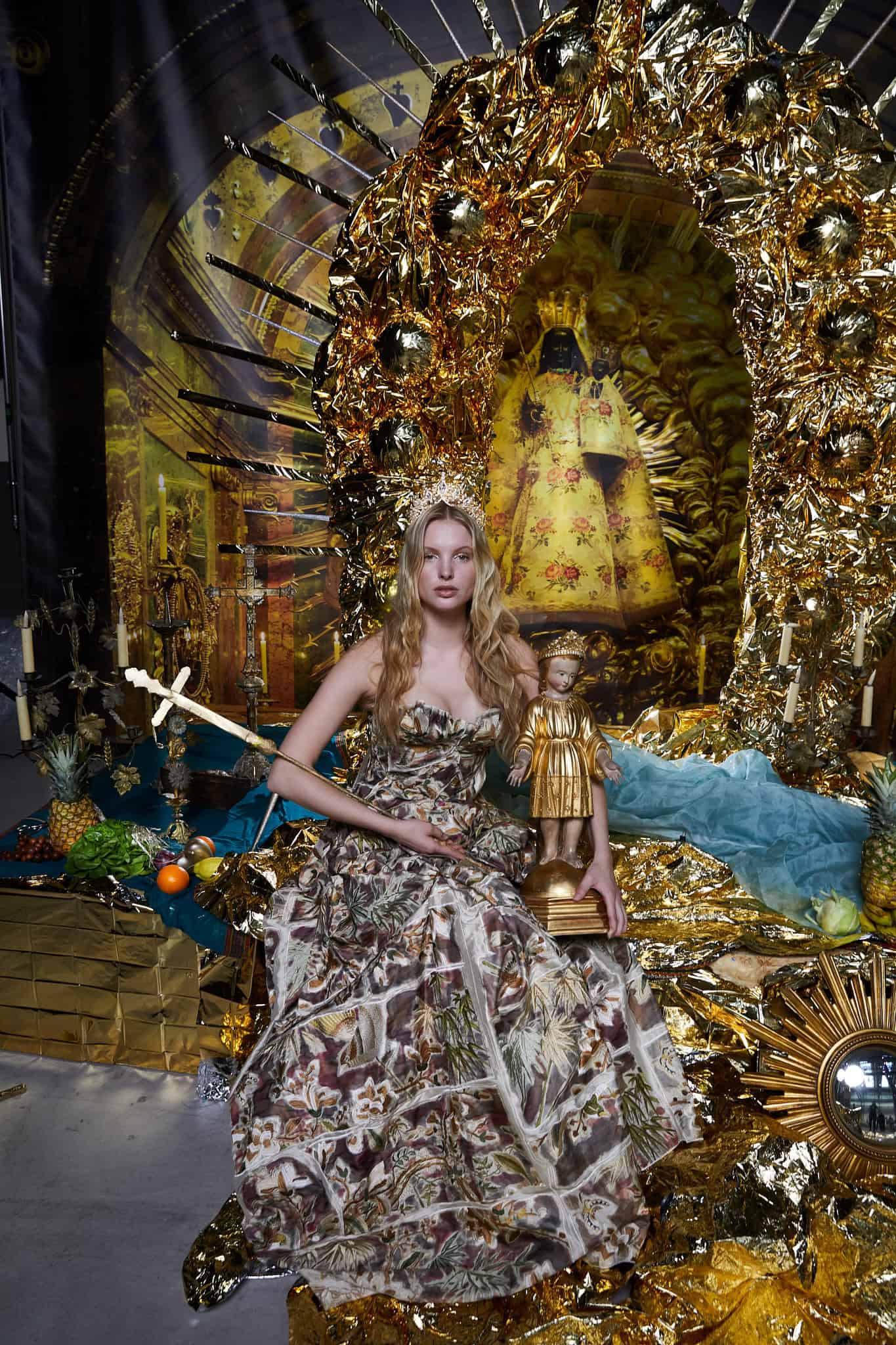
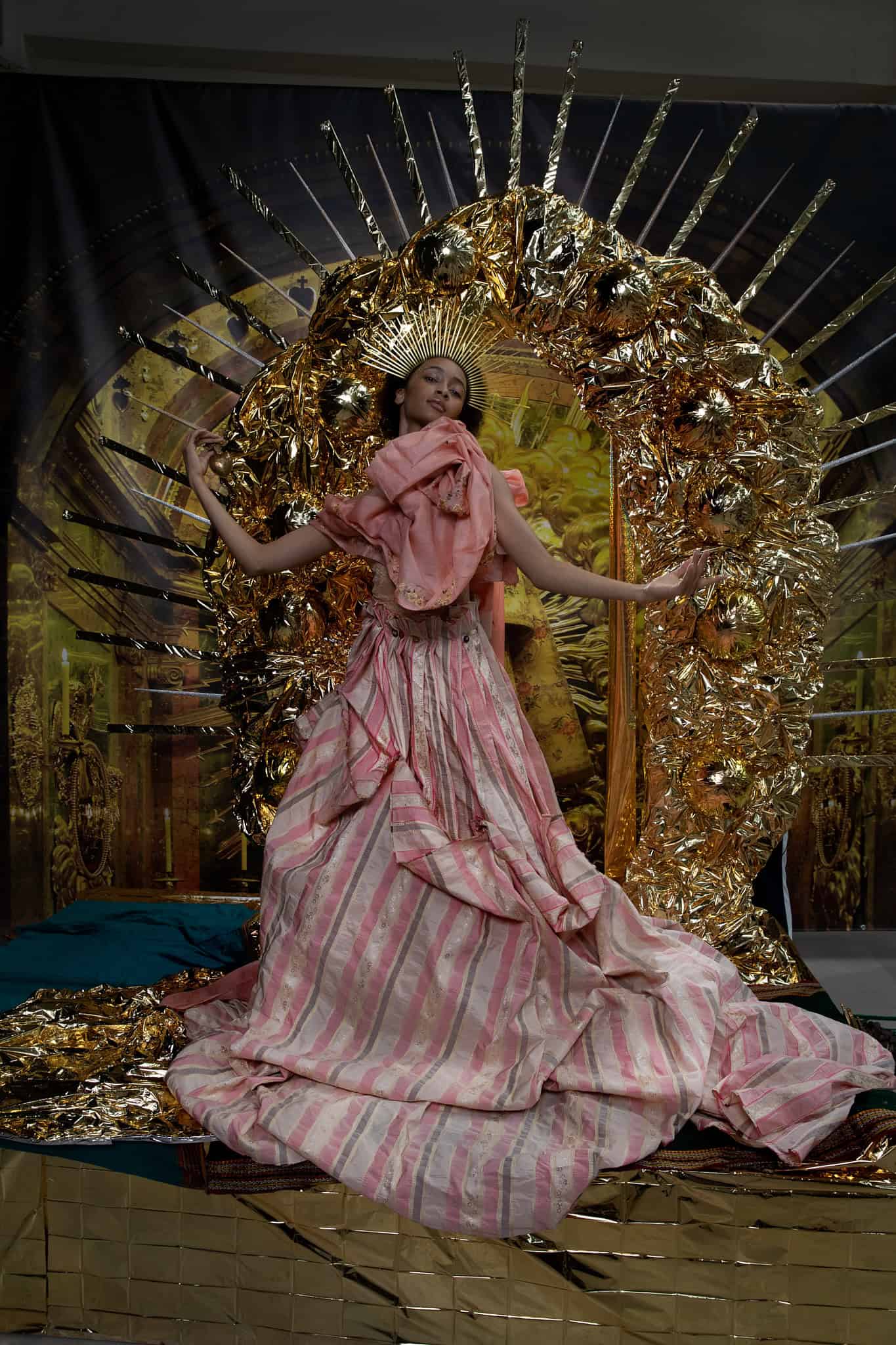
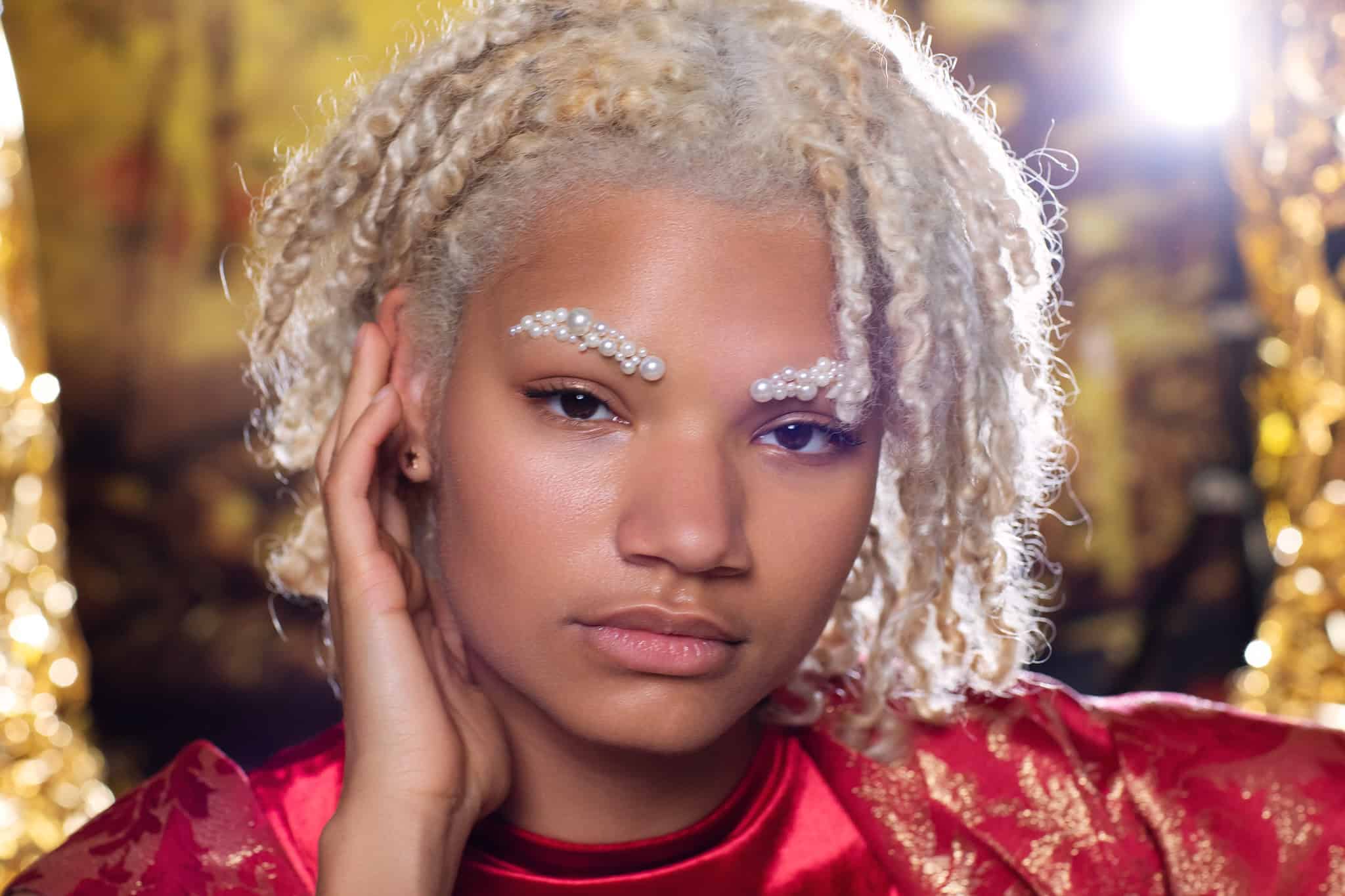
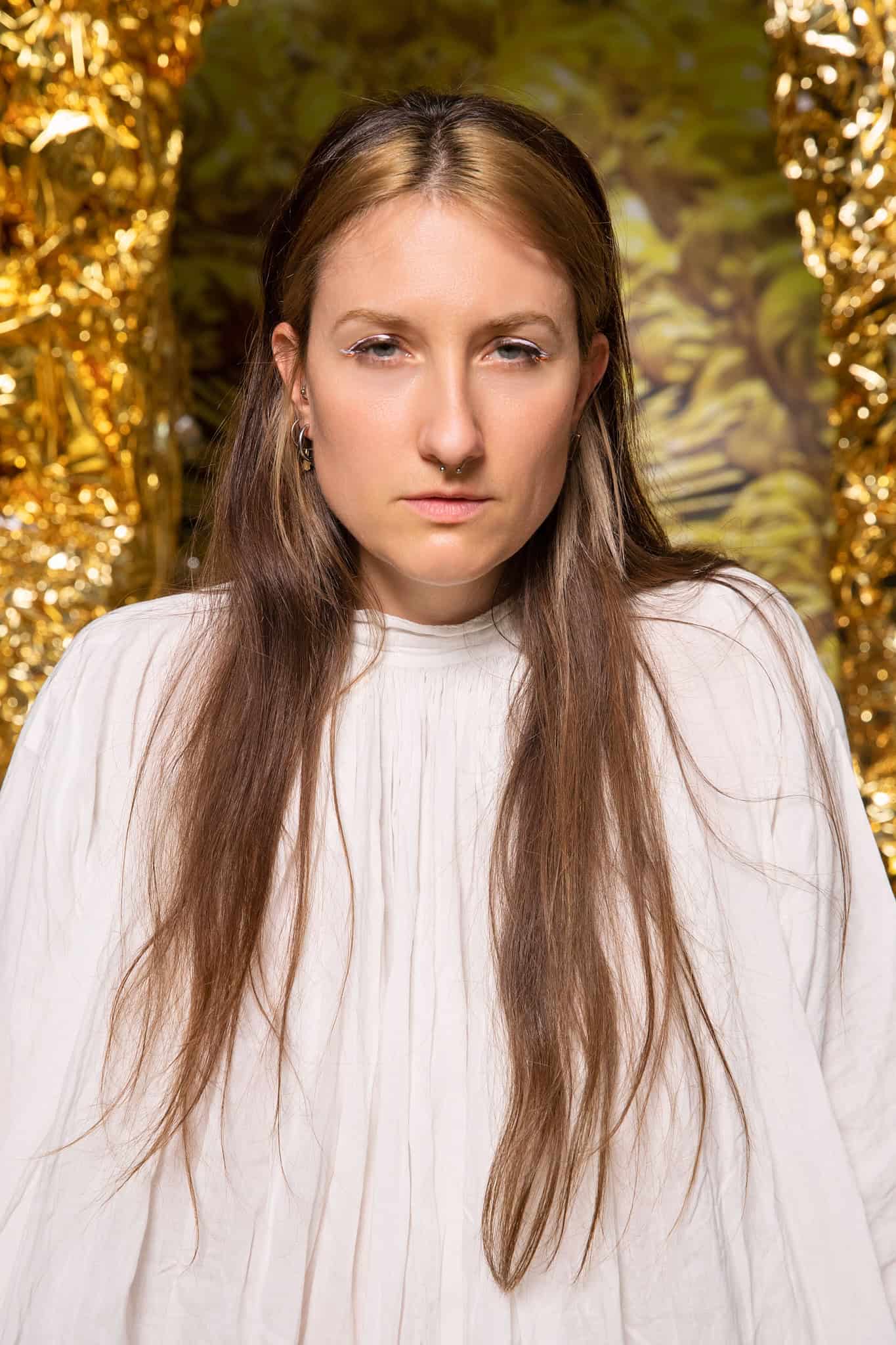
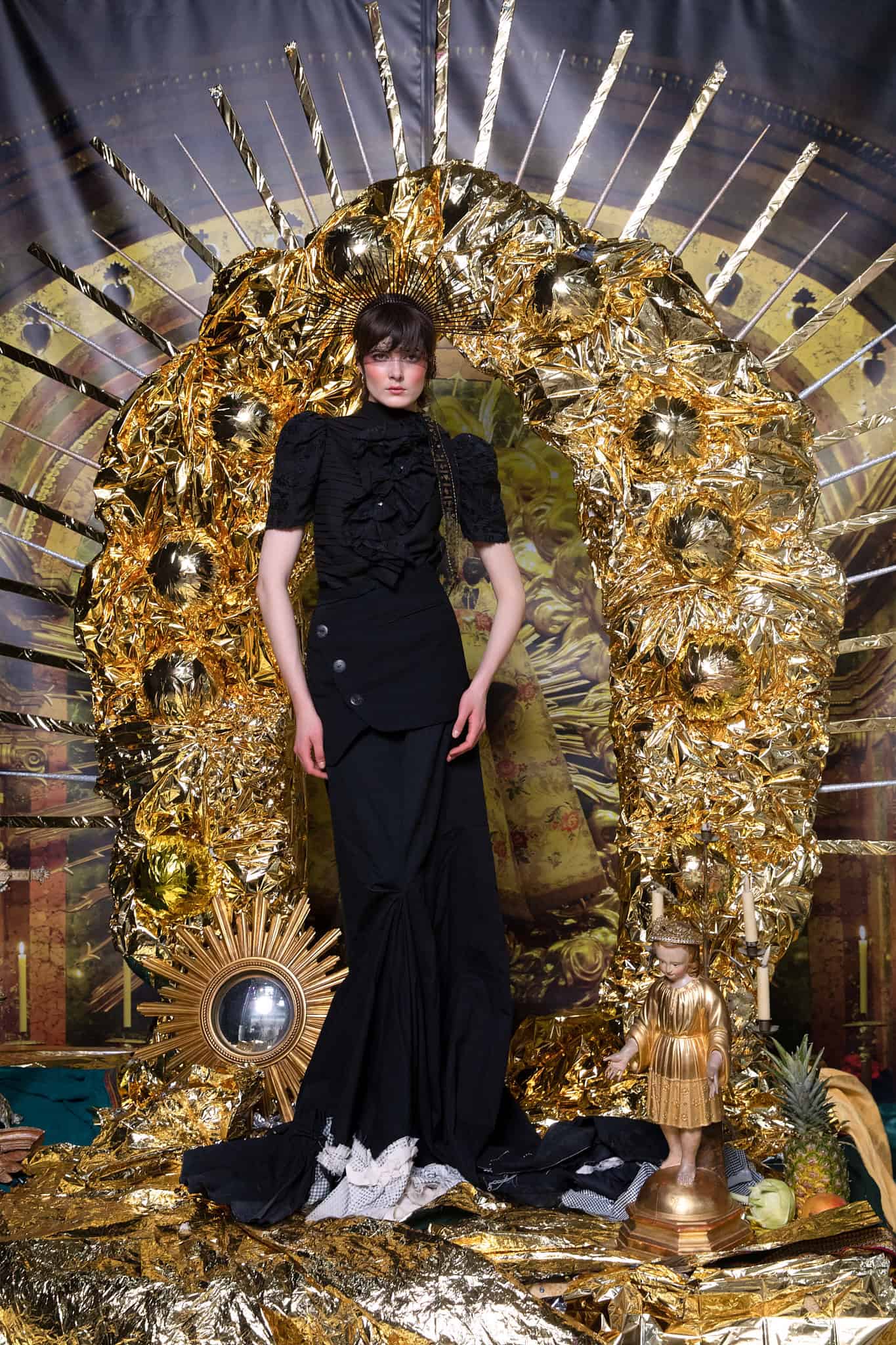
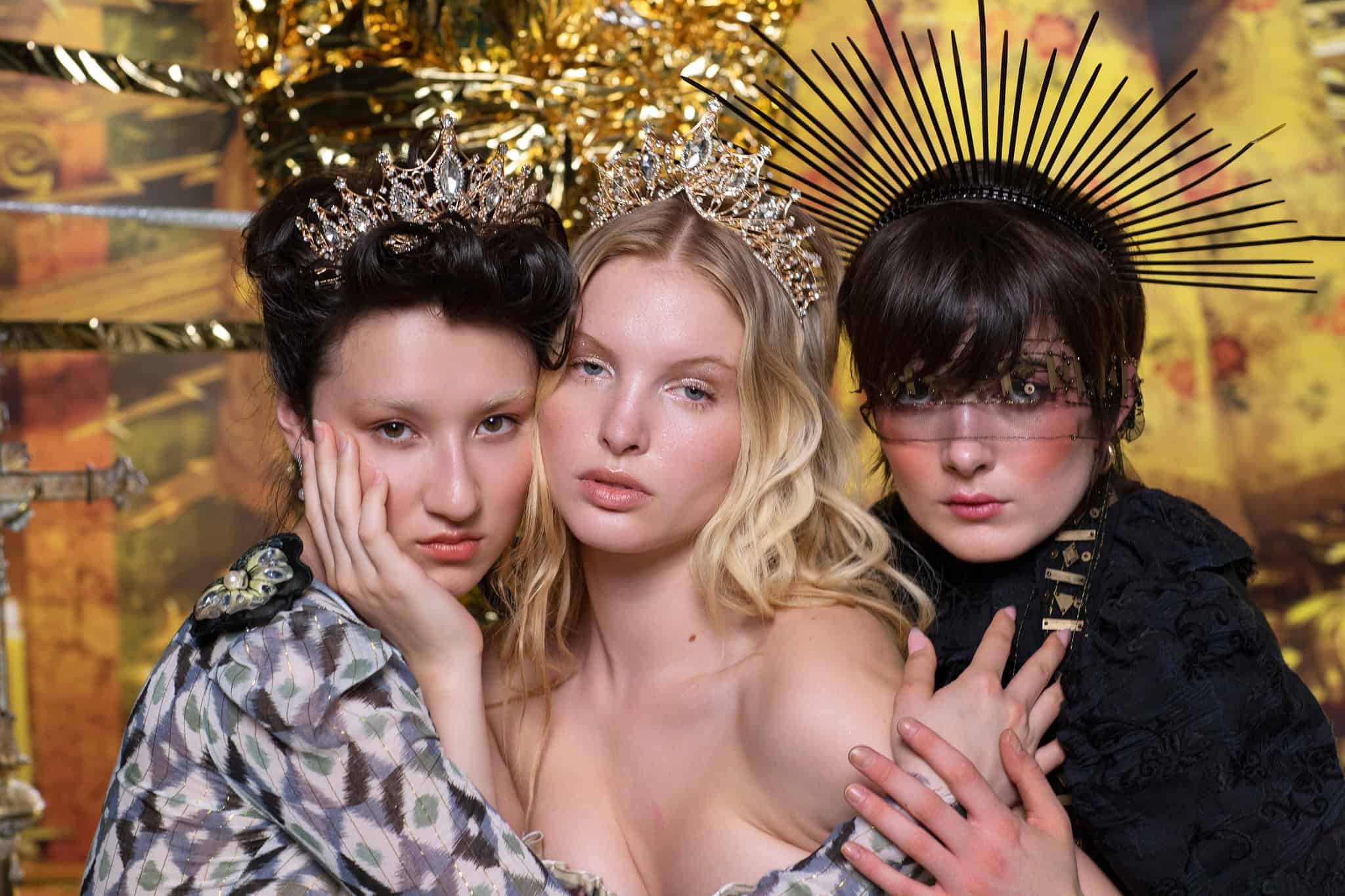
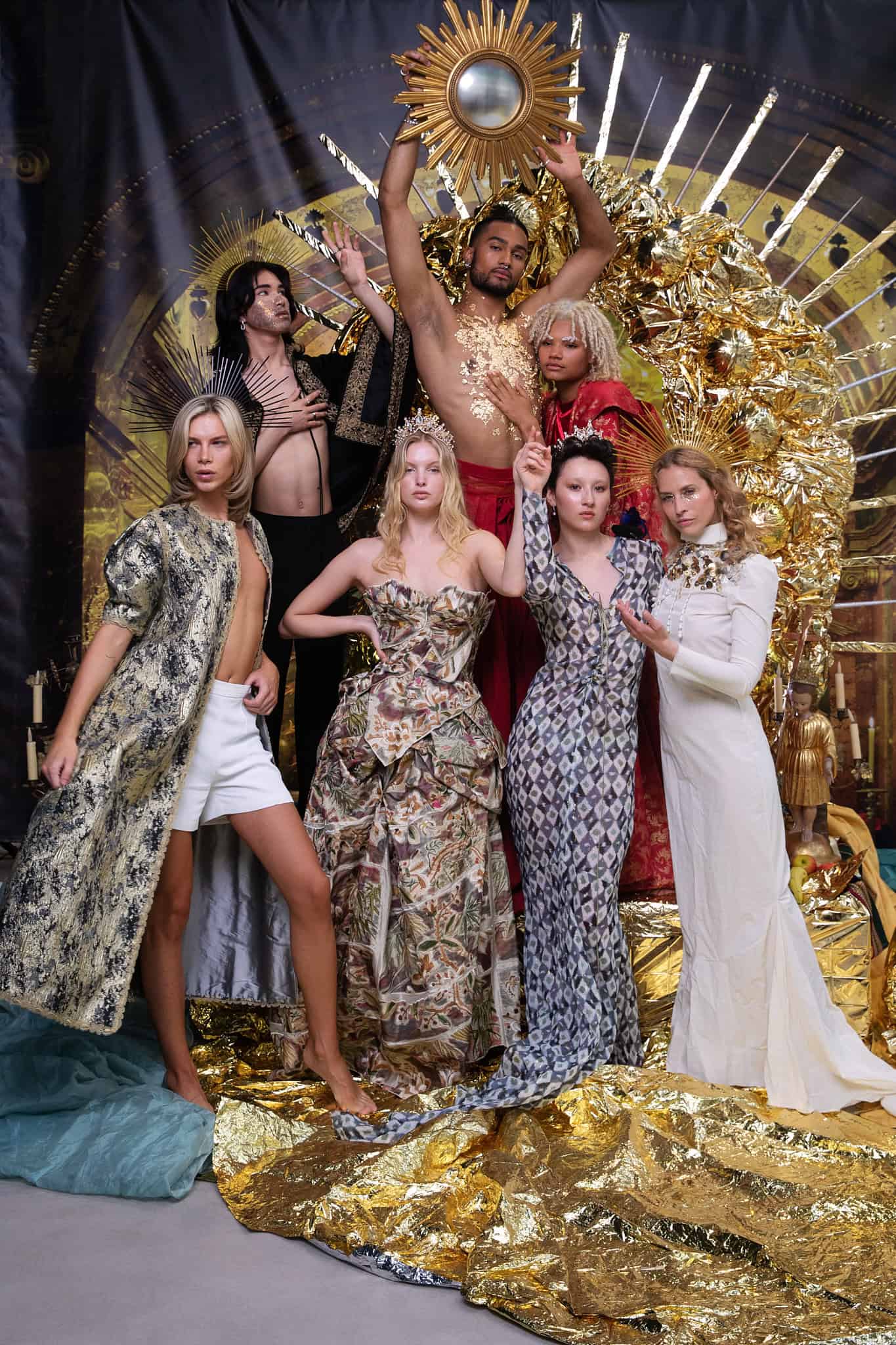
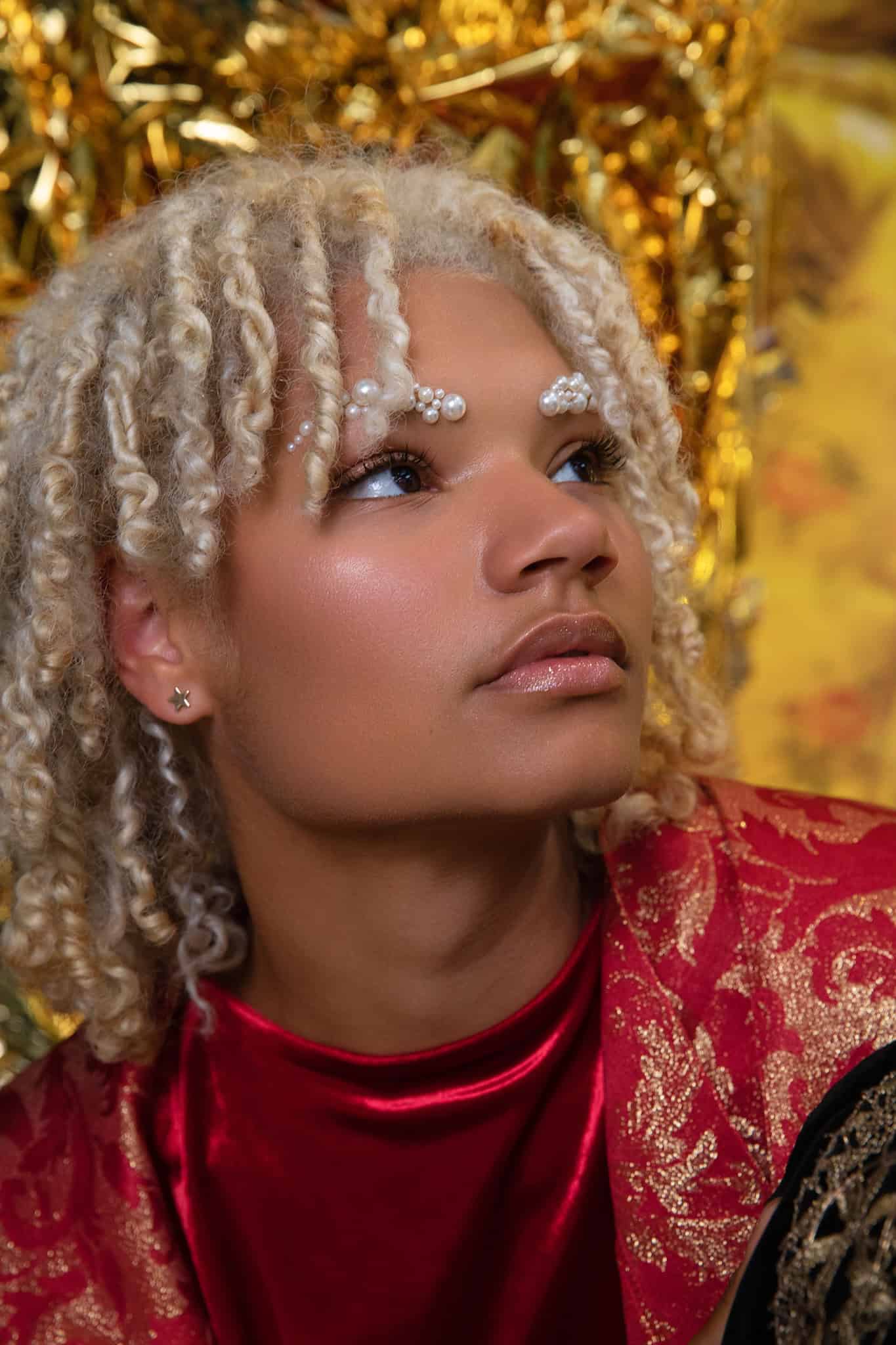
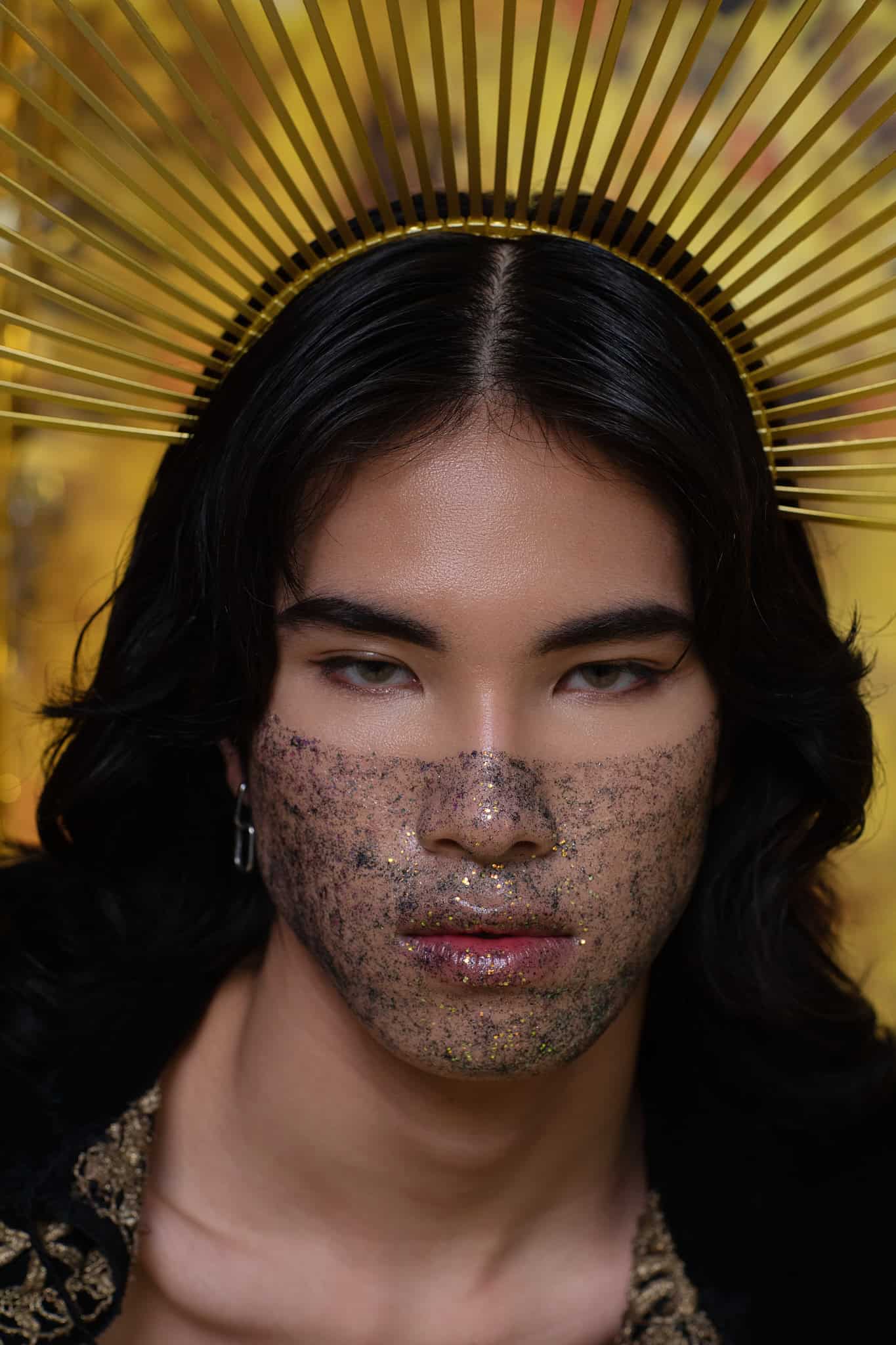
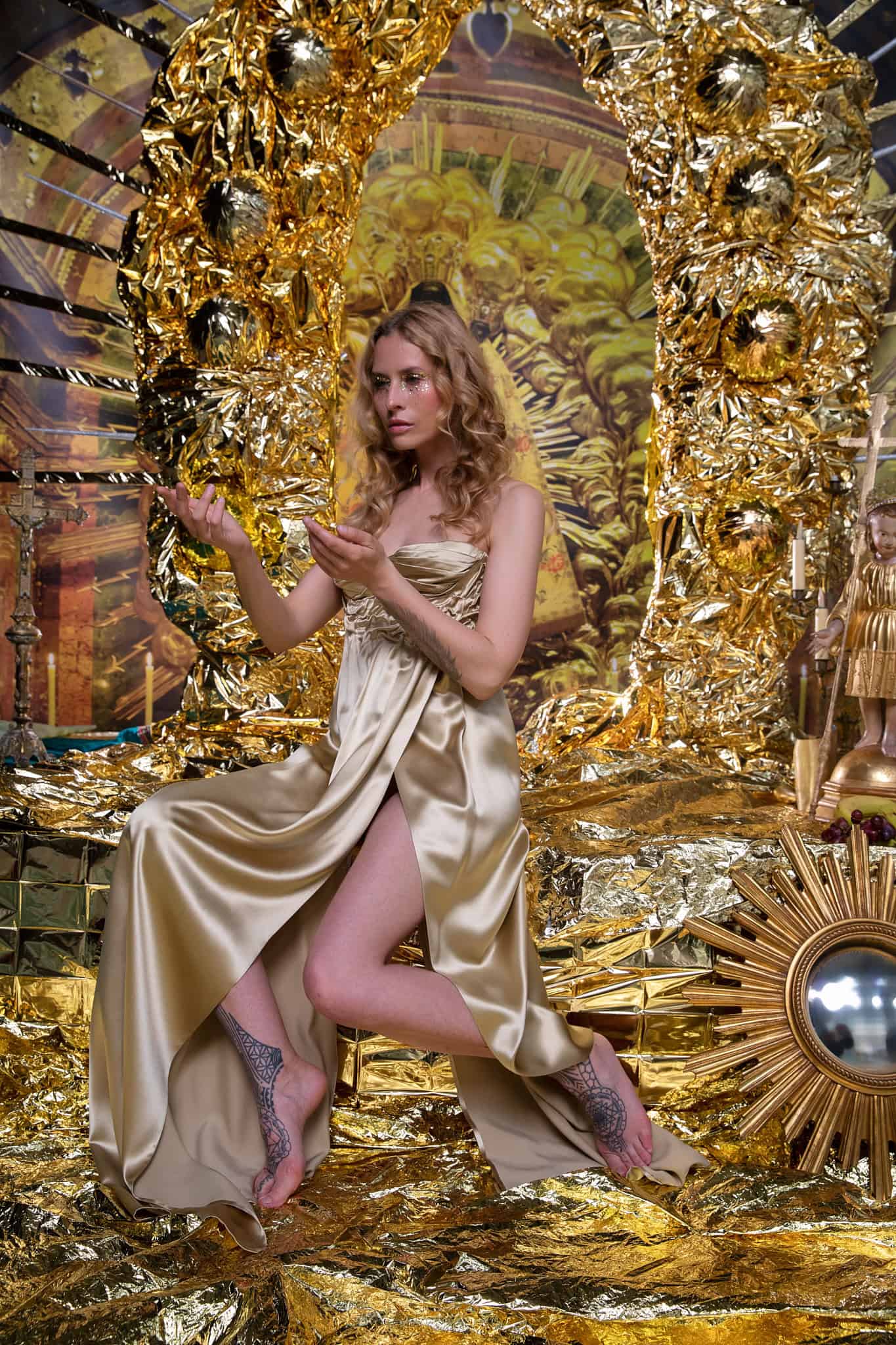
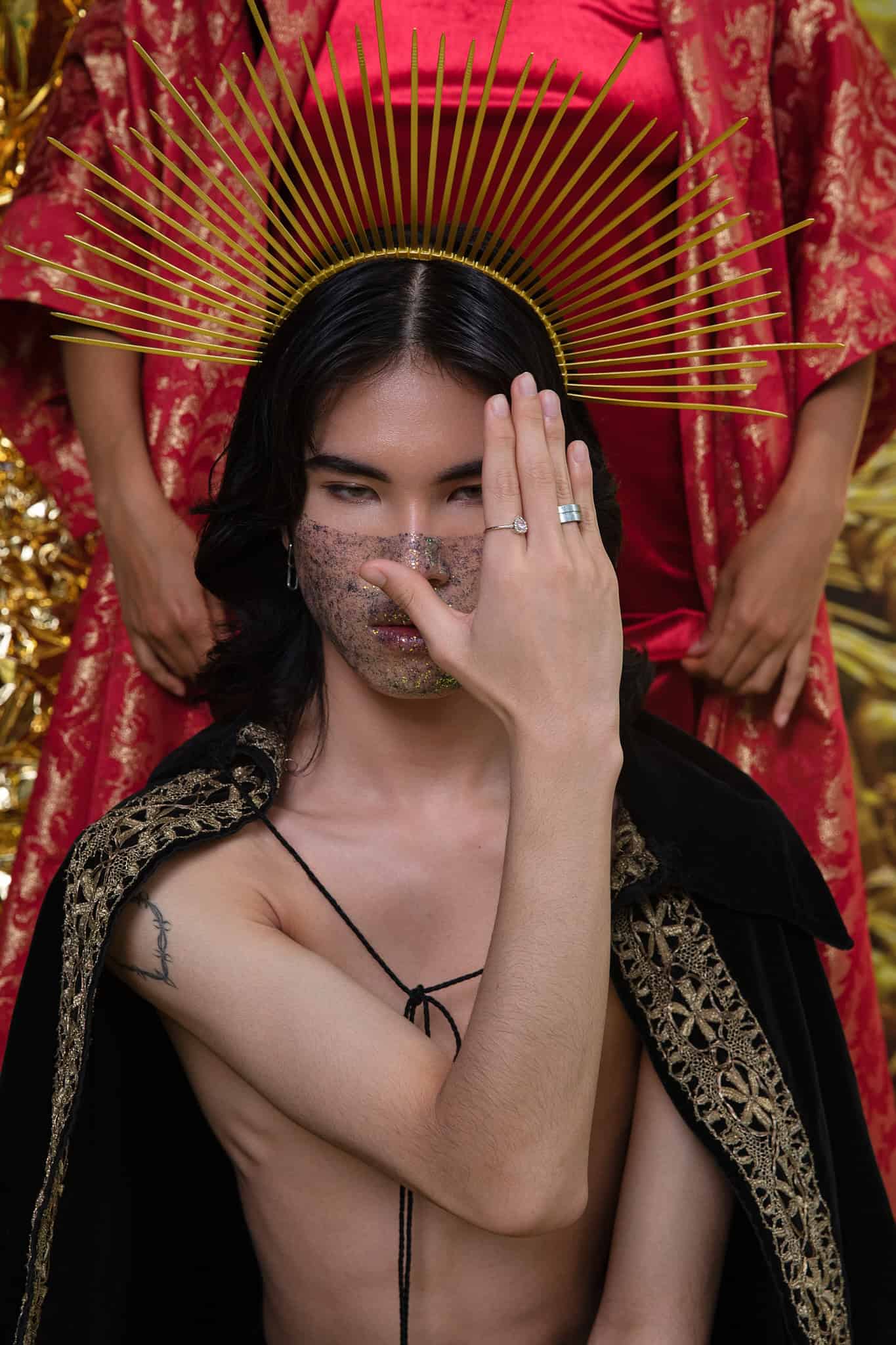
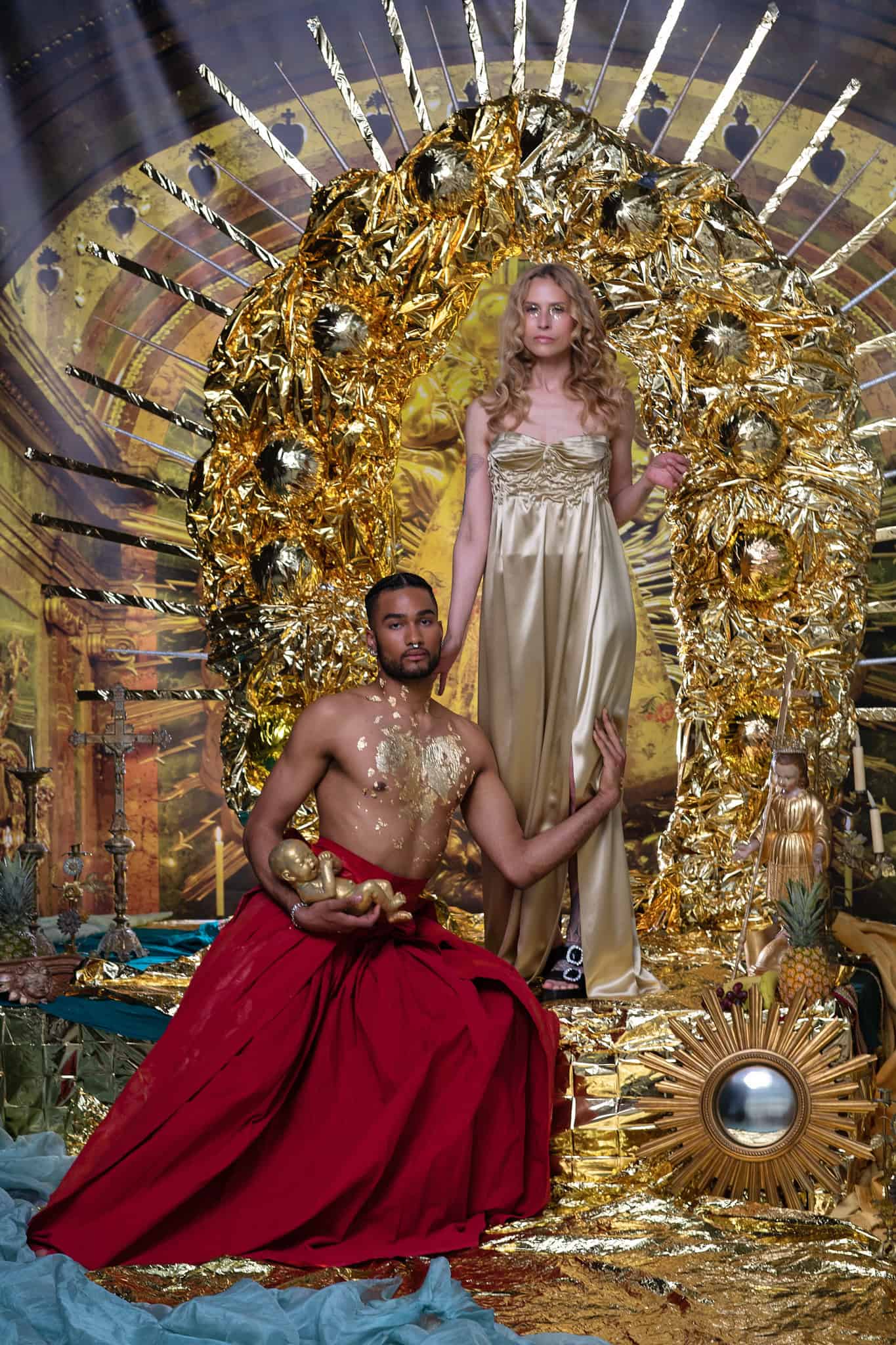
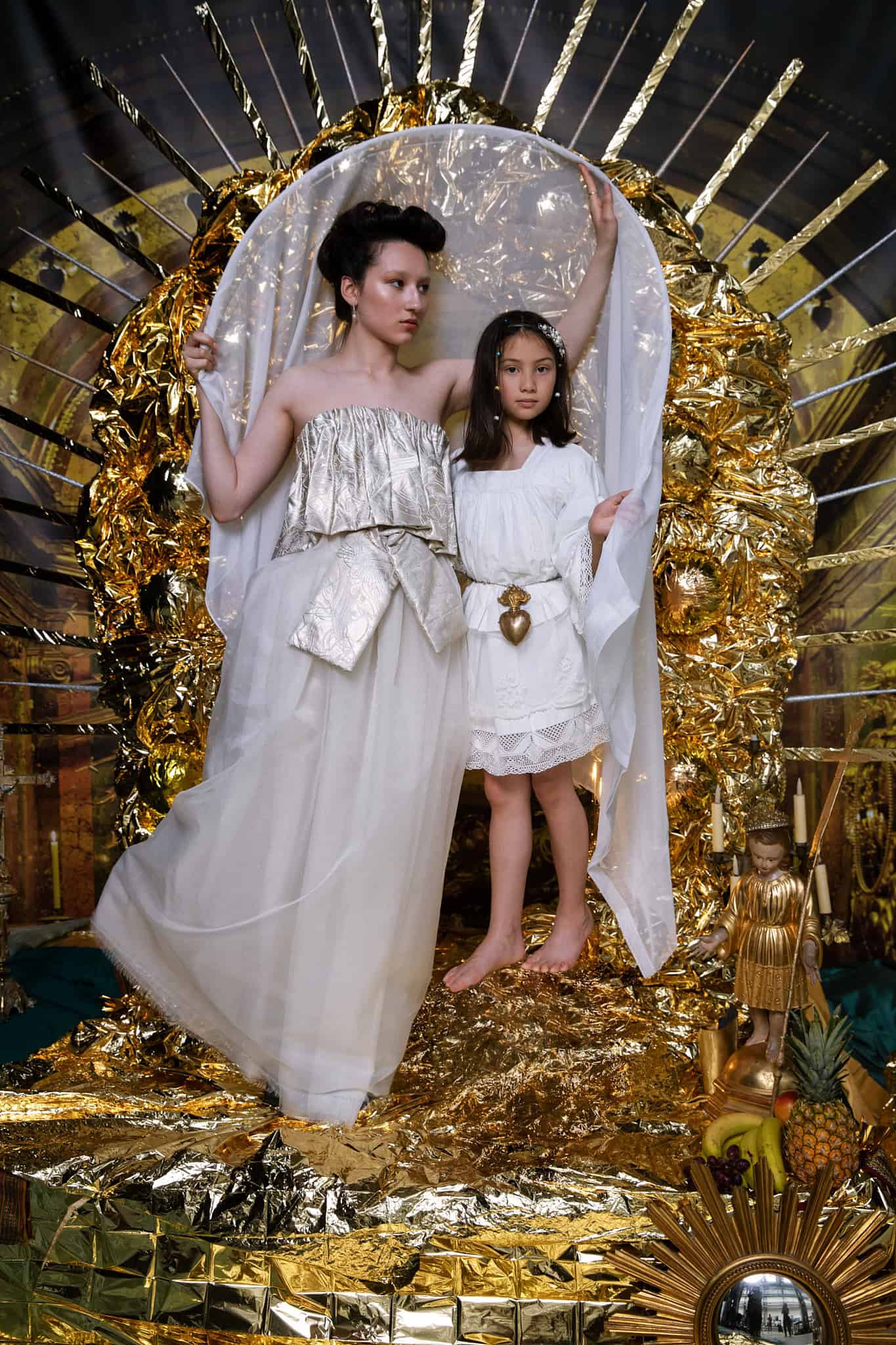
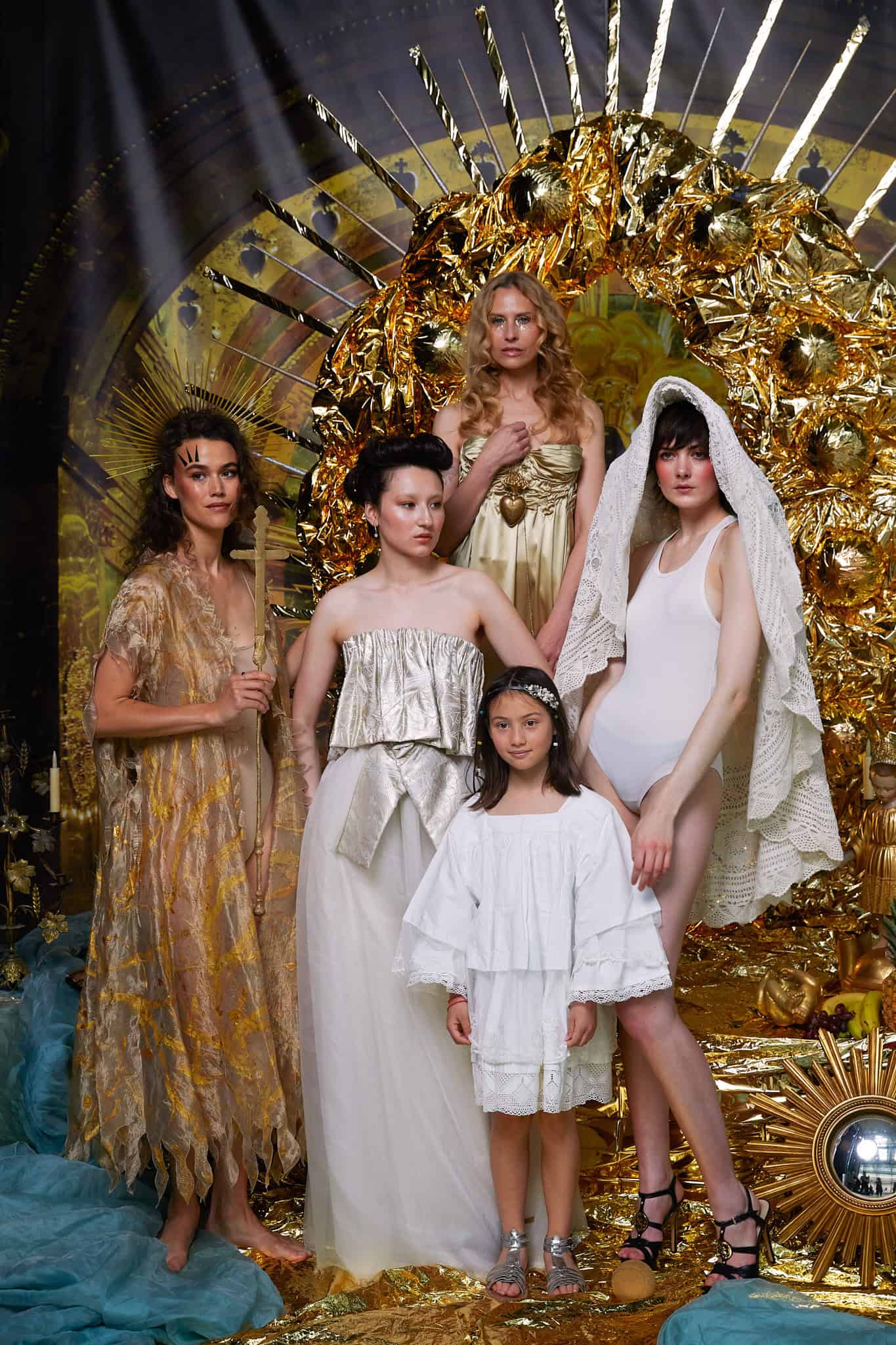
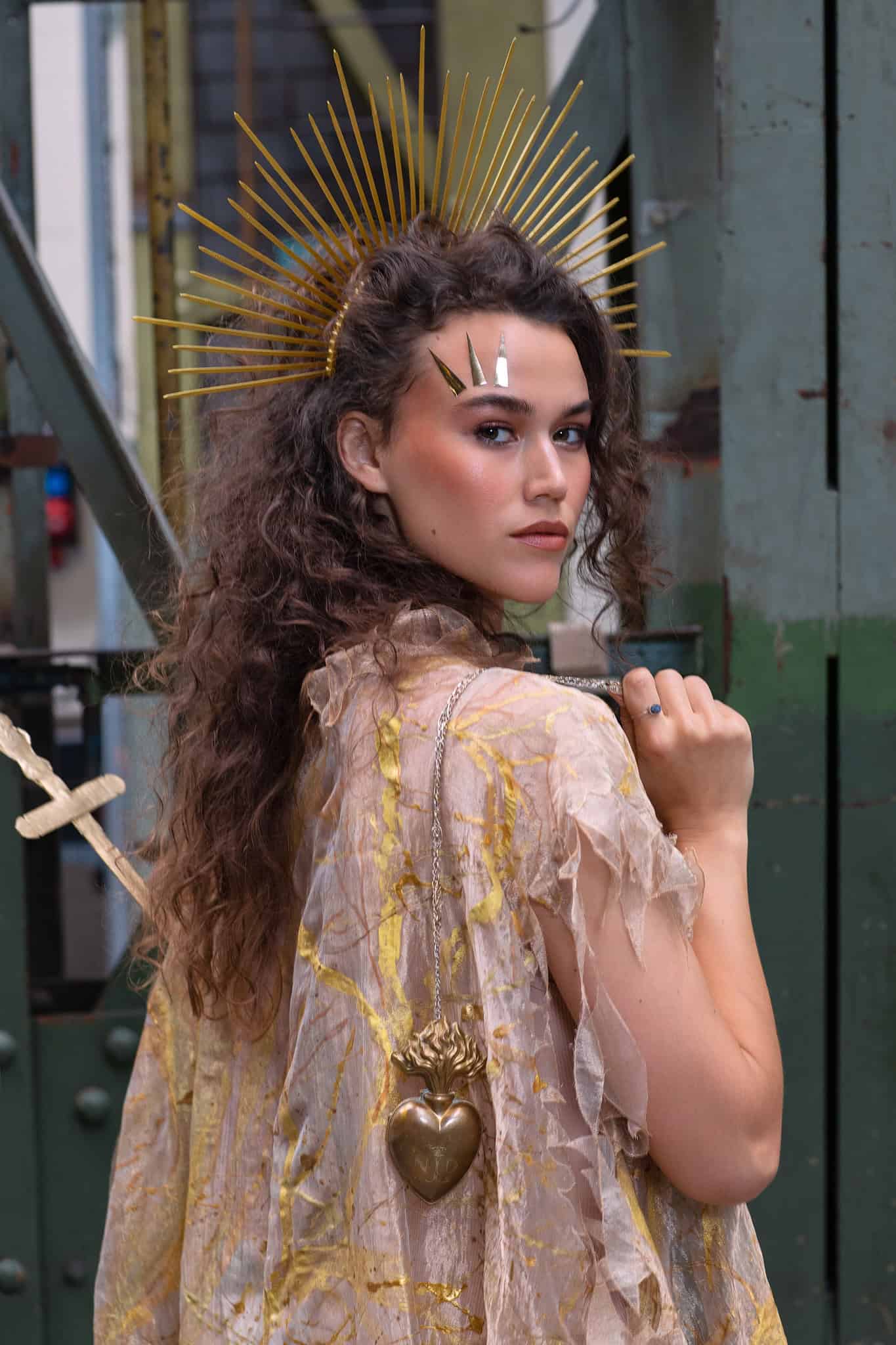
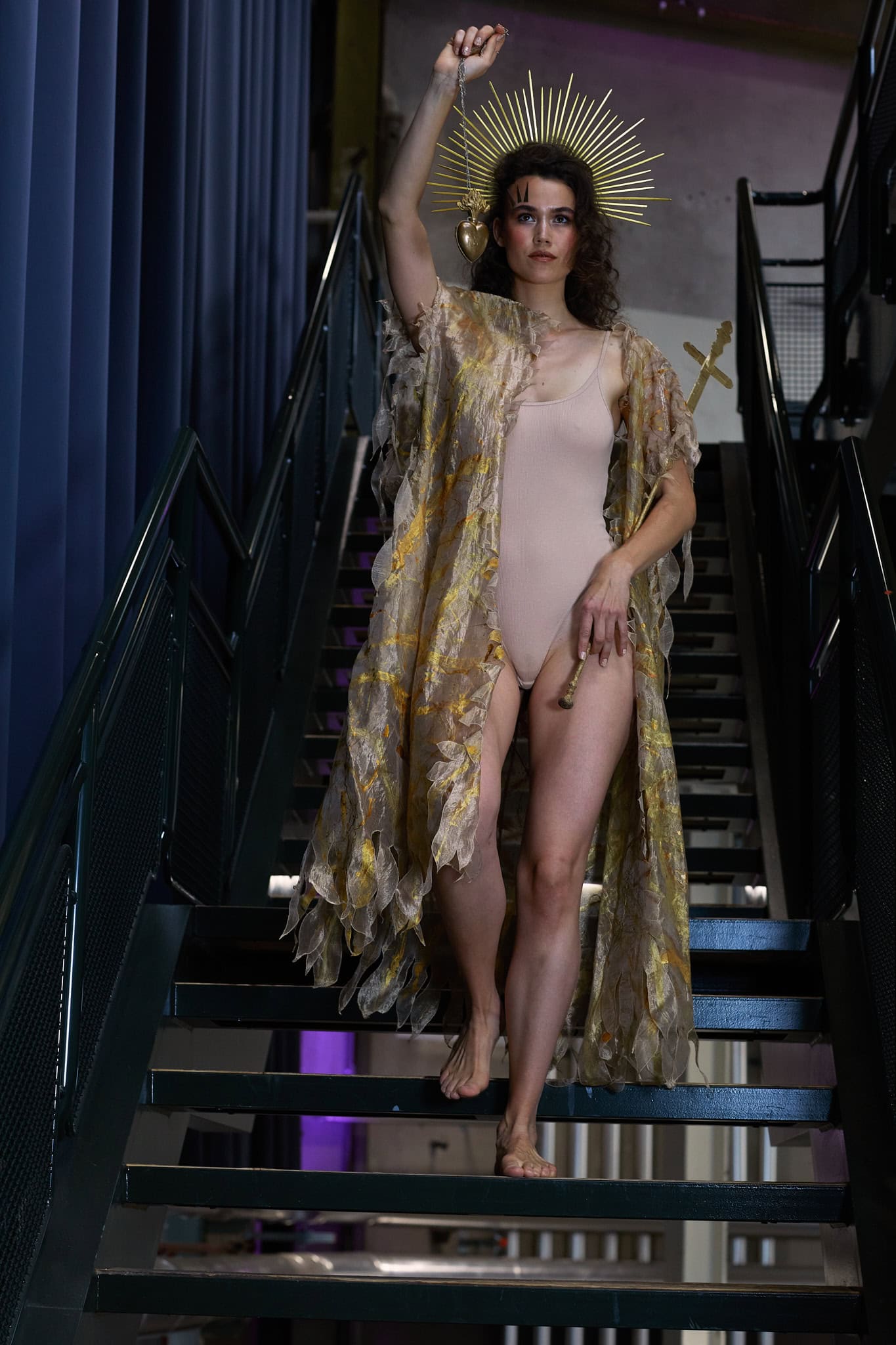
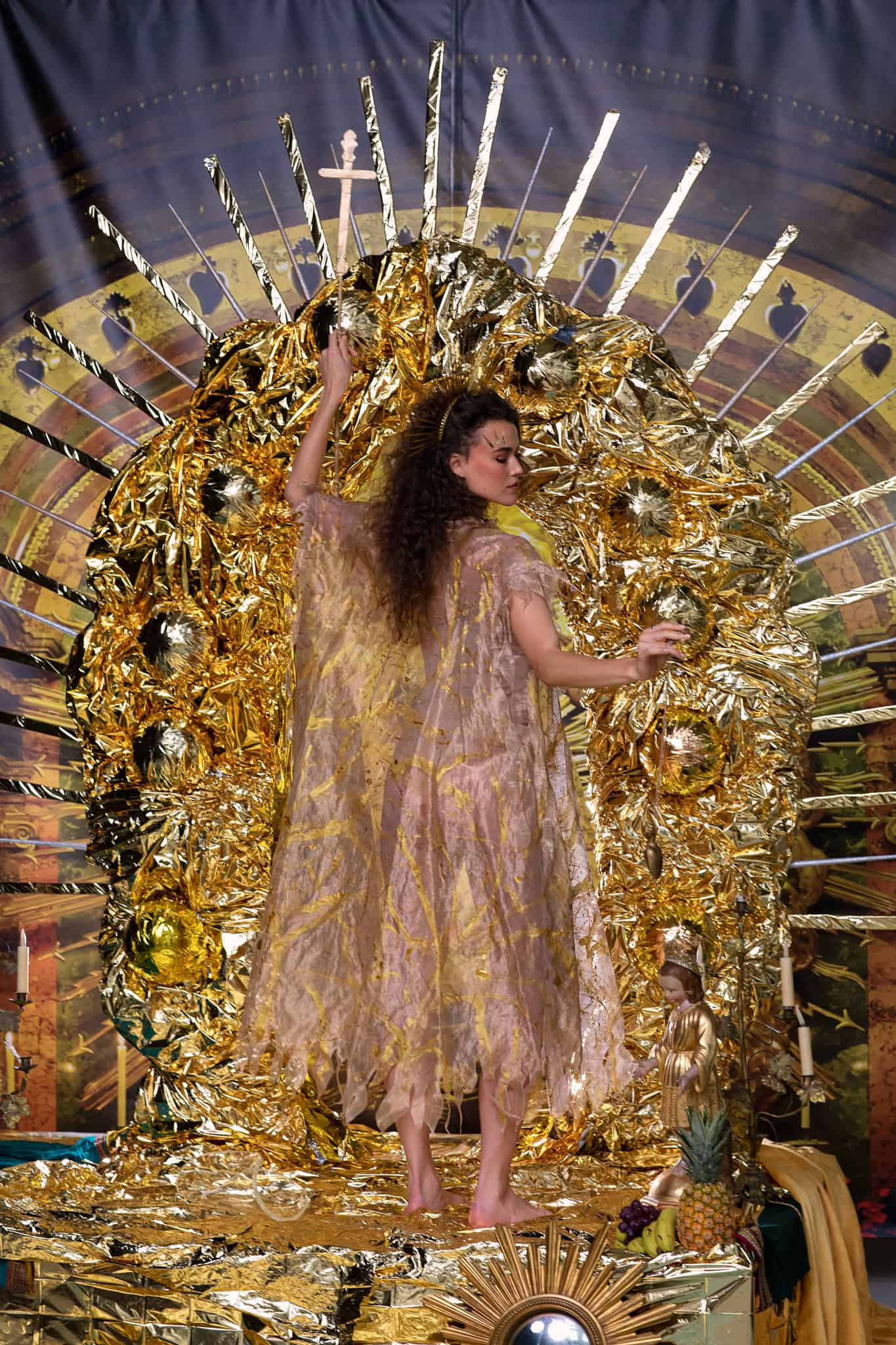
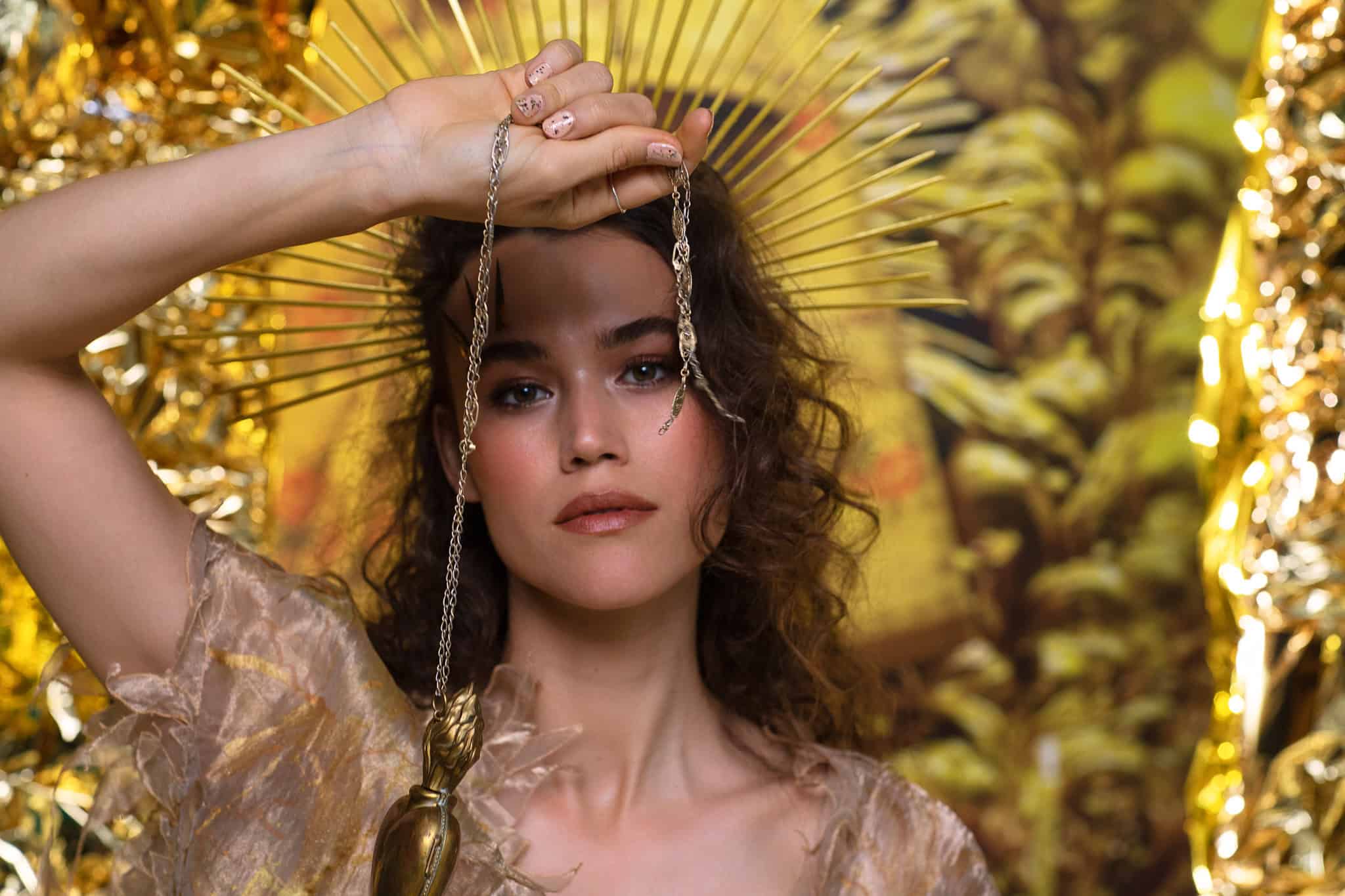
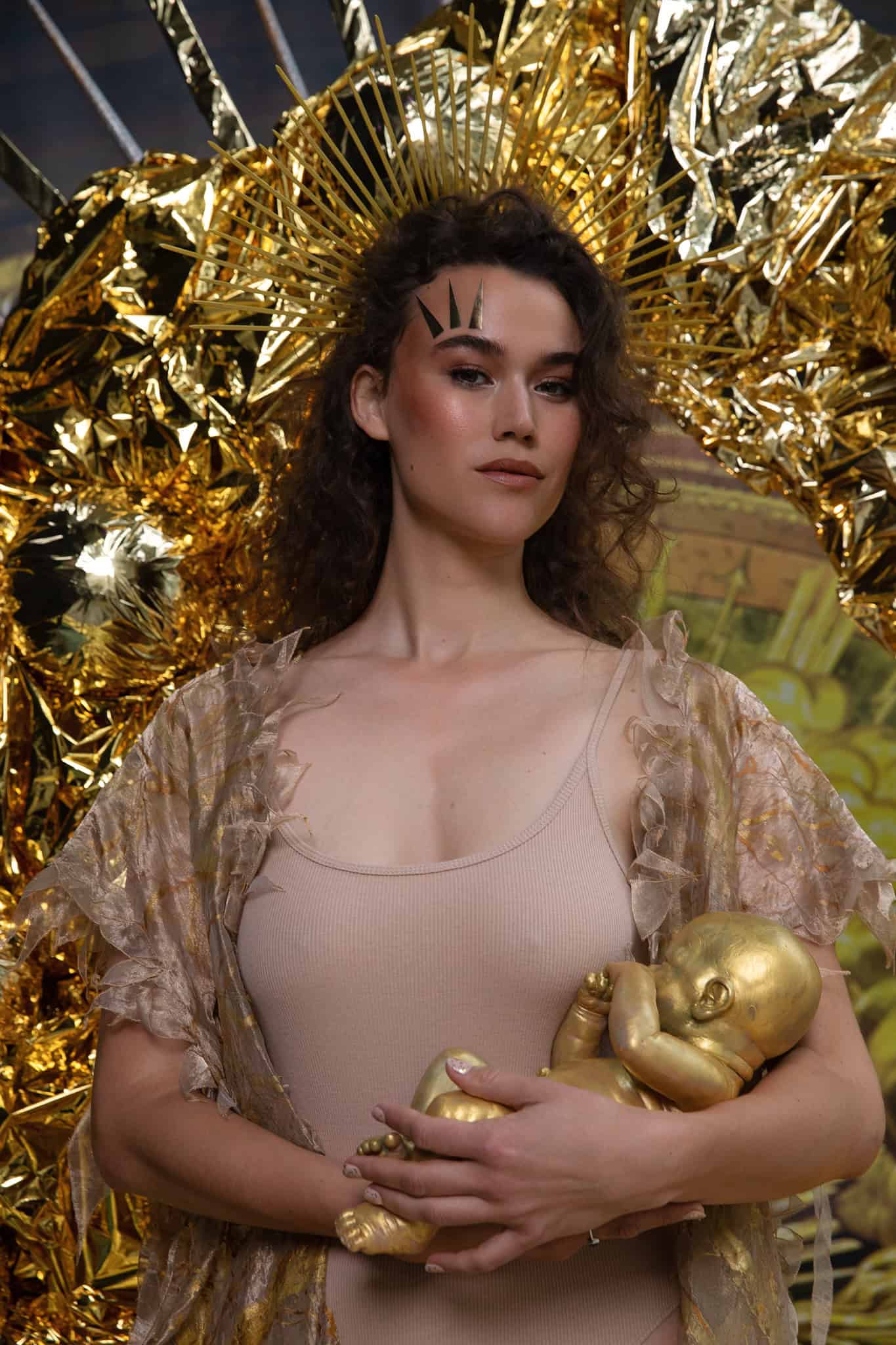
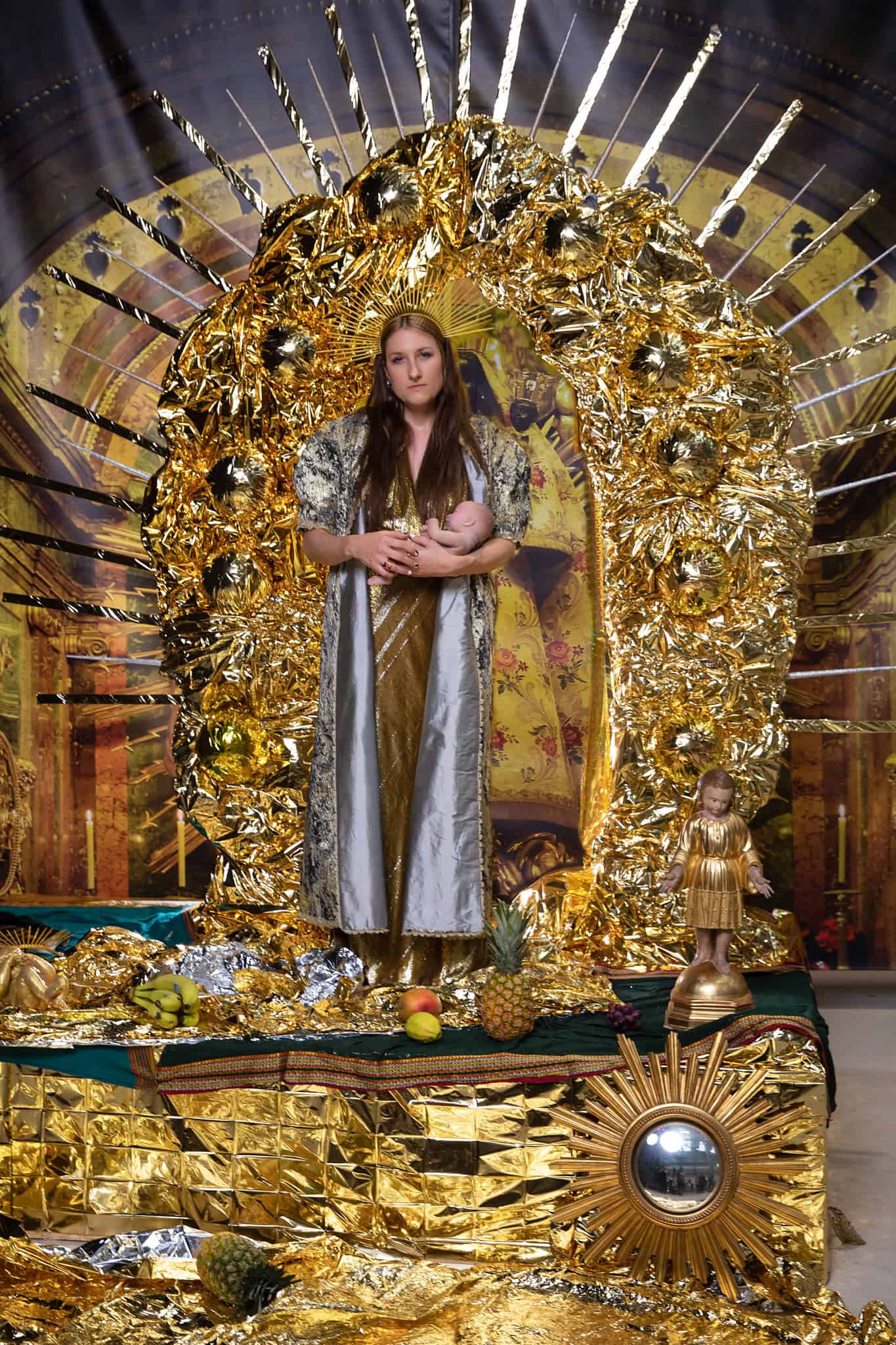
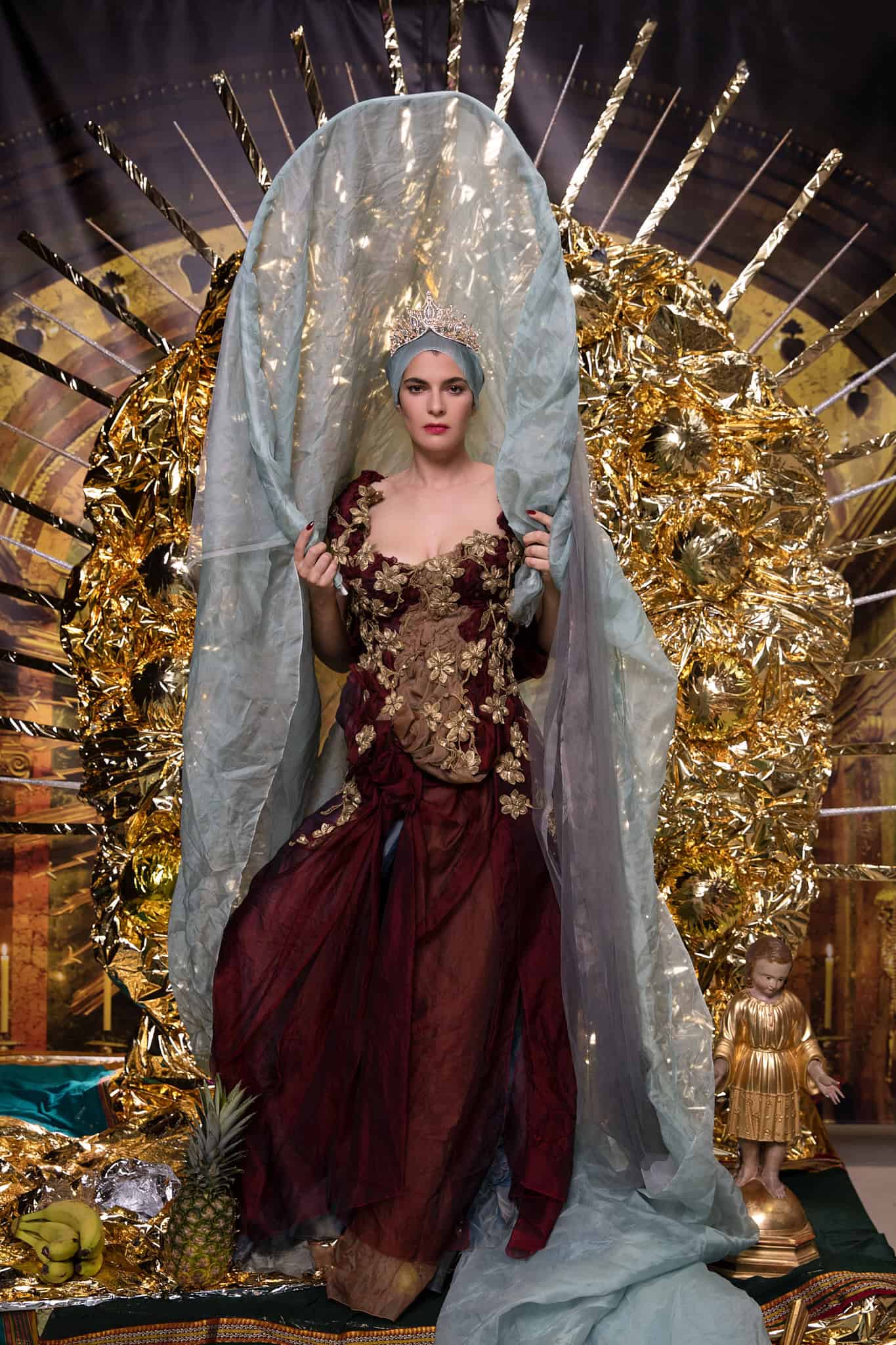
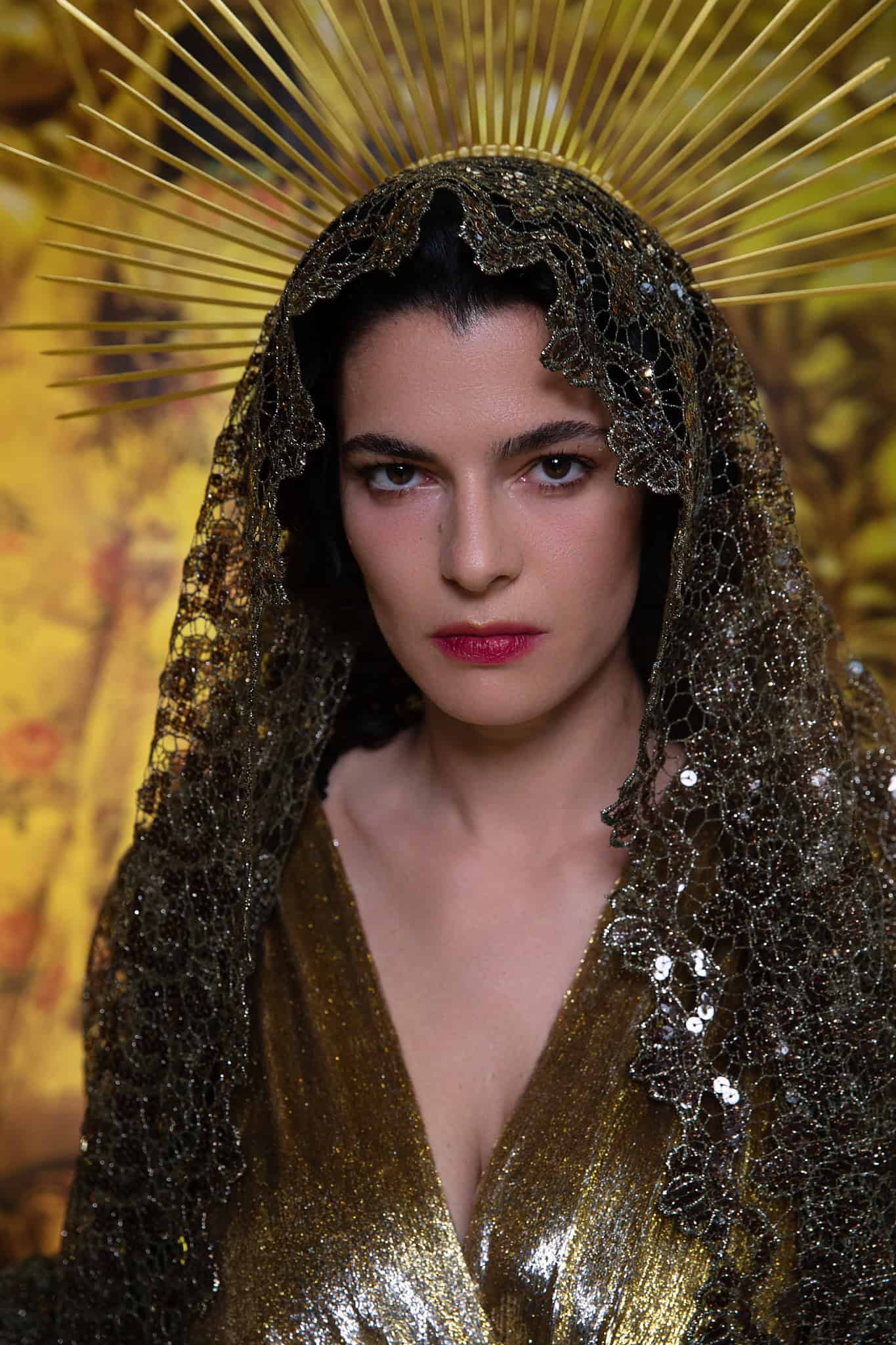
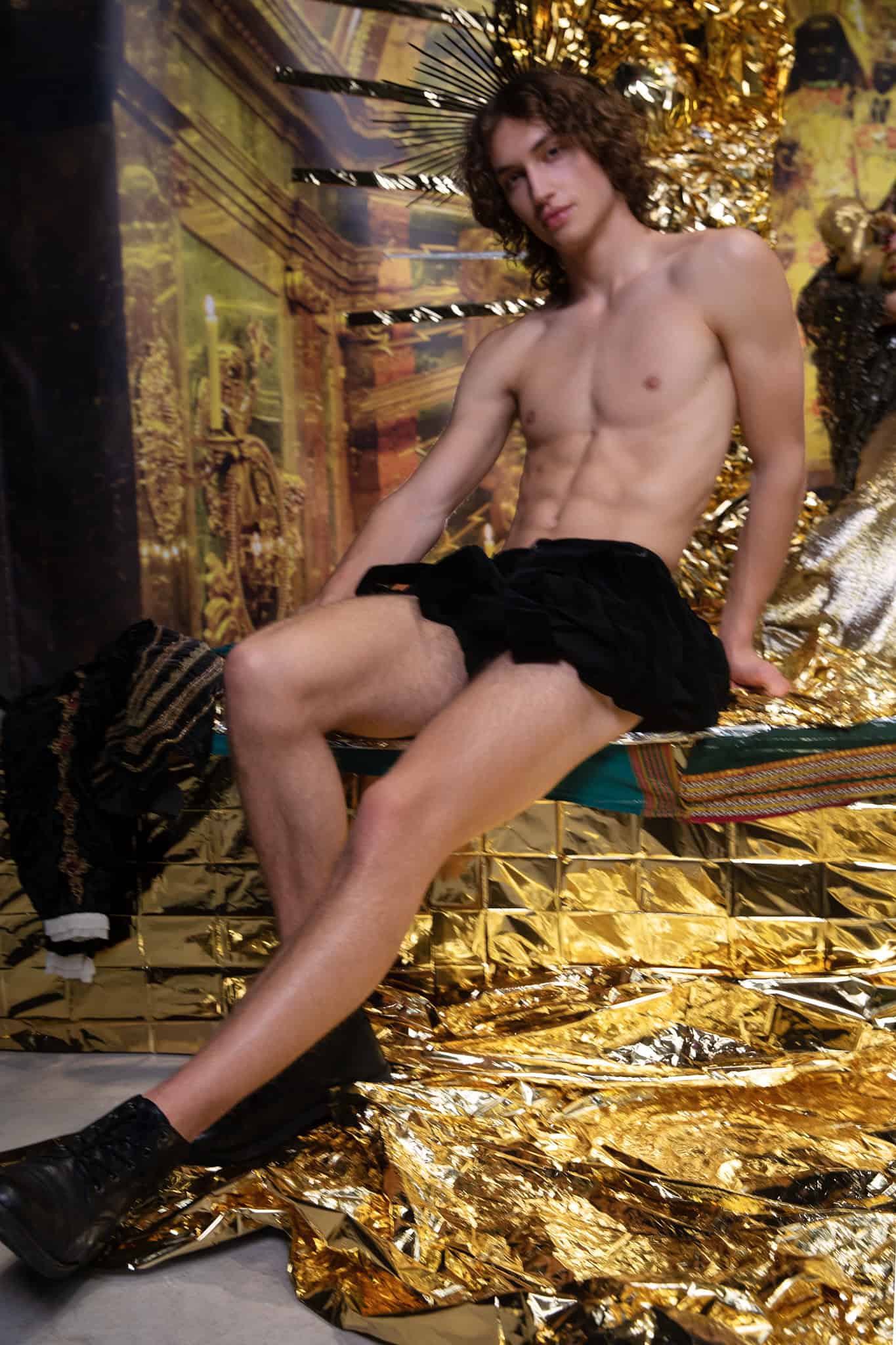
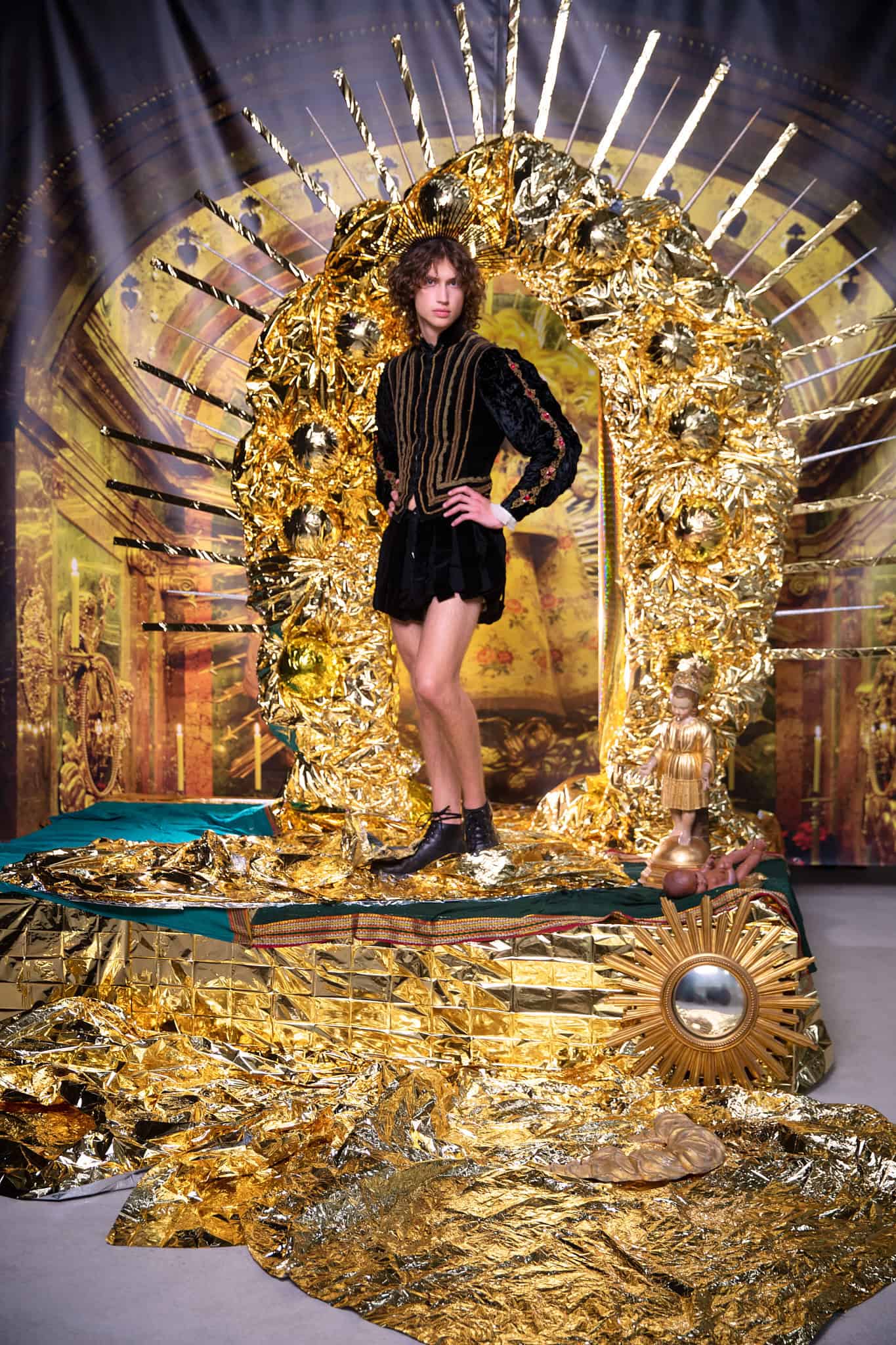
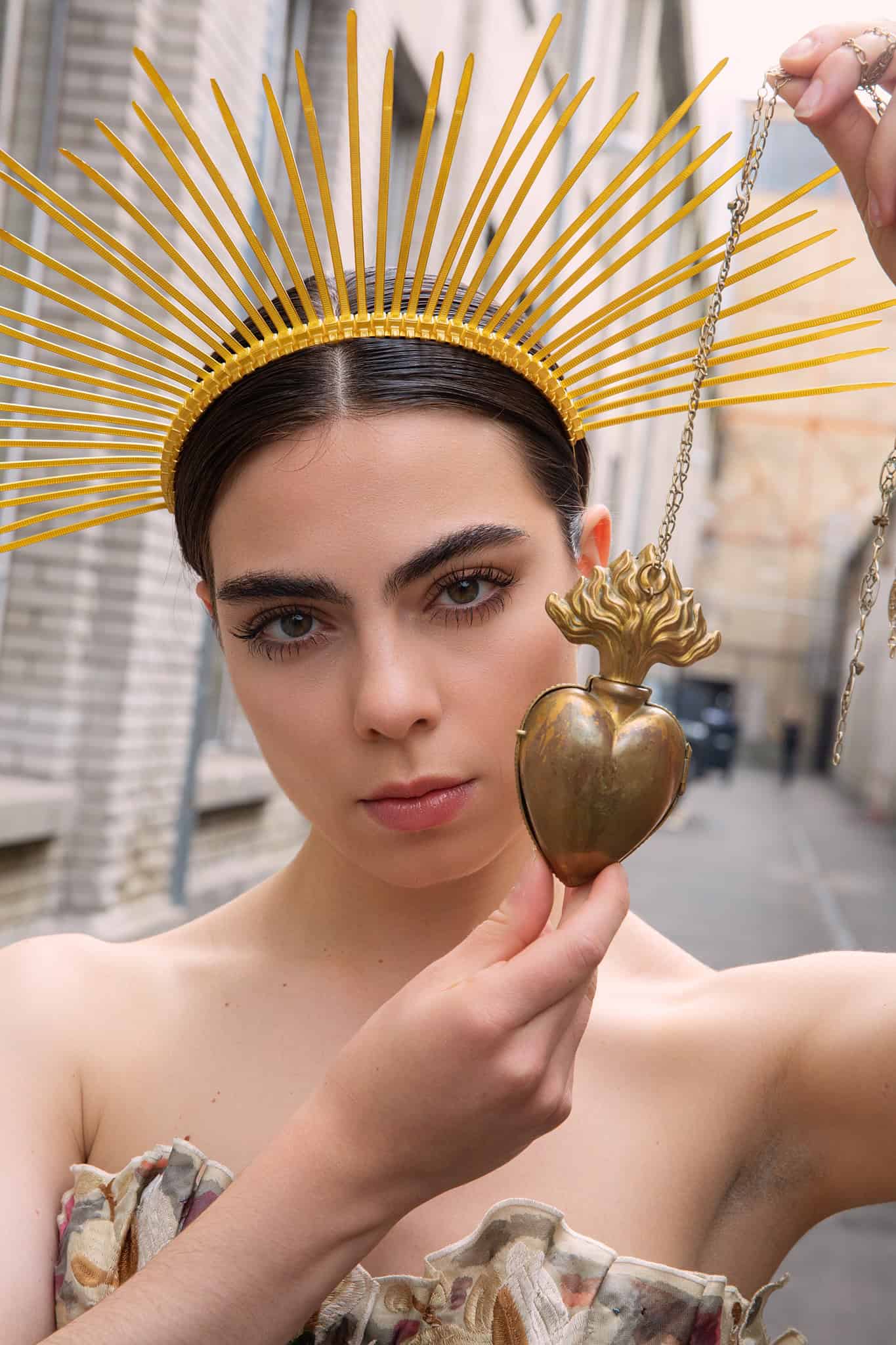
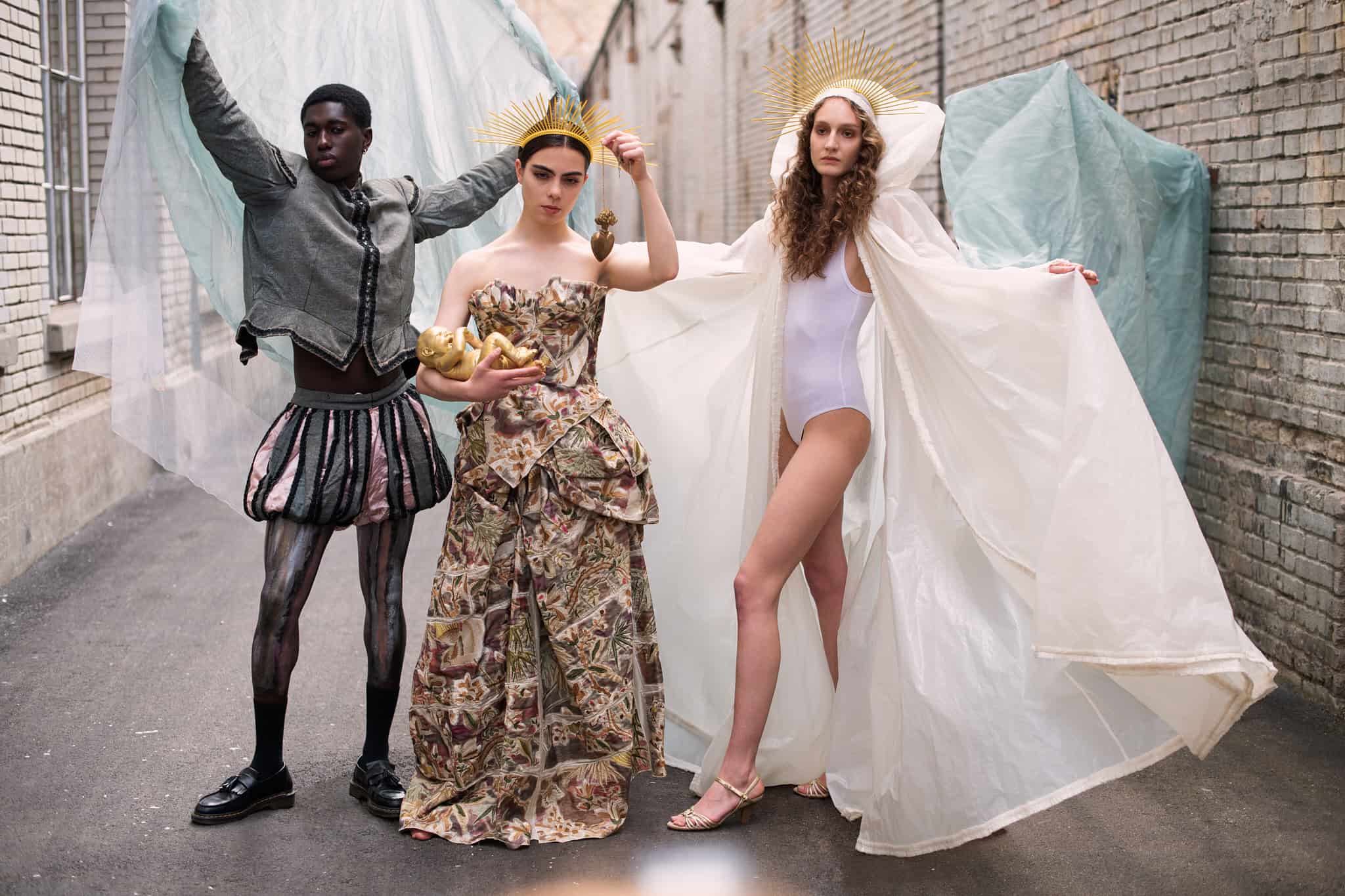
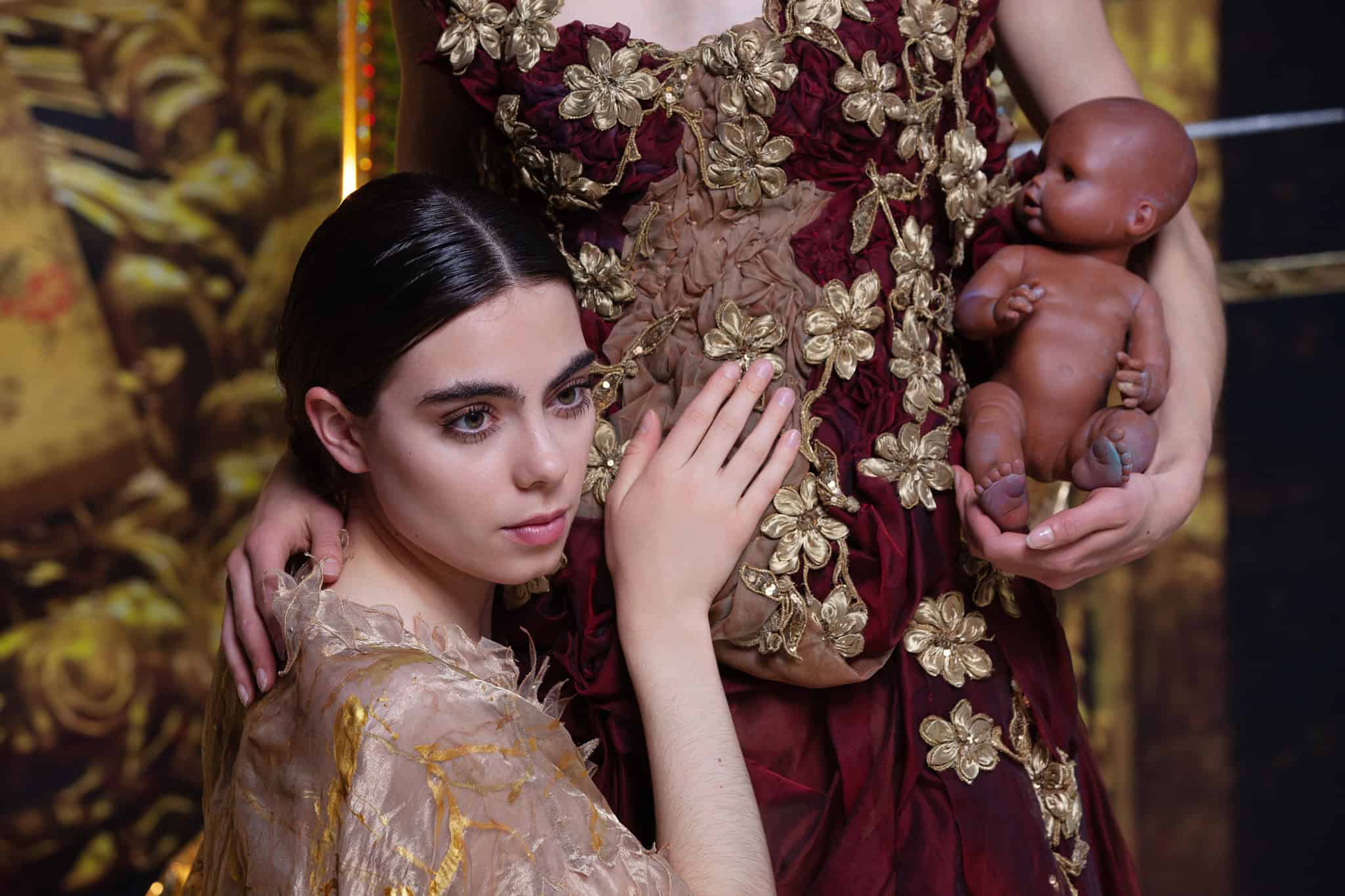
“Die Schwarze Madonna” photoSCHWEIZ, Zurich 2022 by Iris Brosch
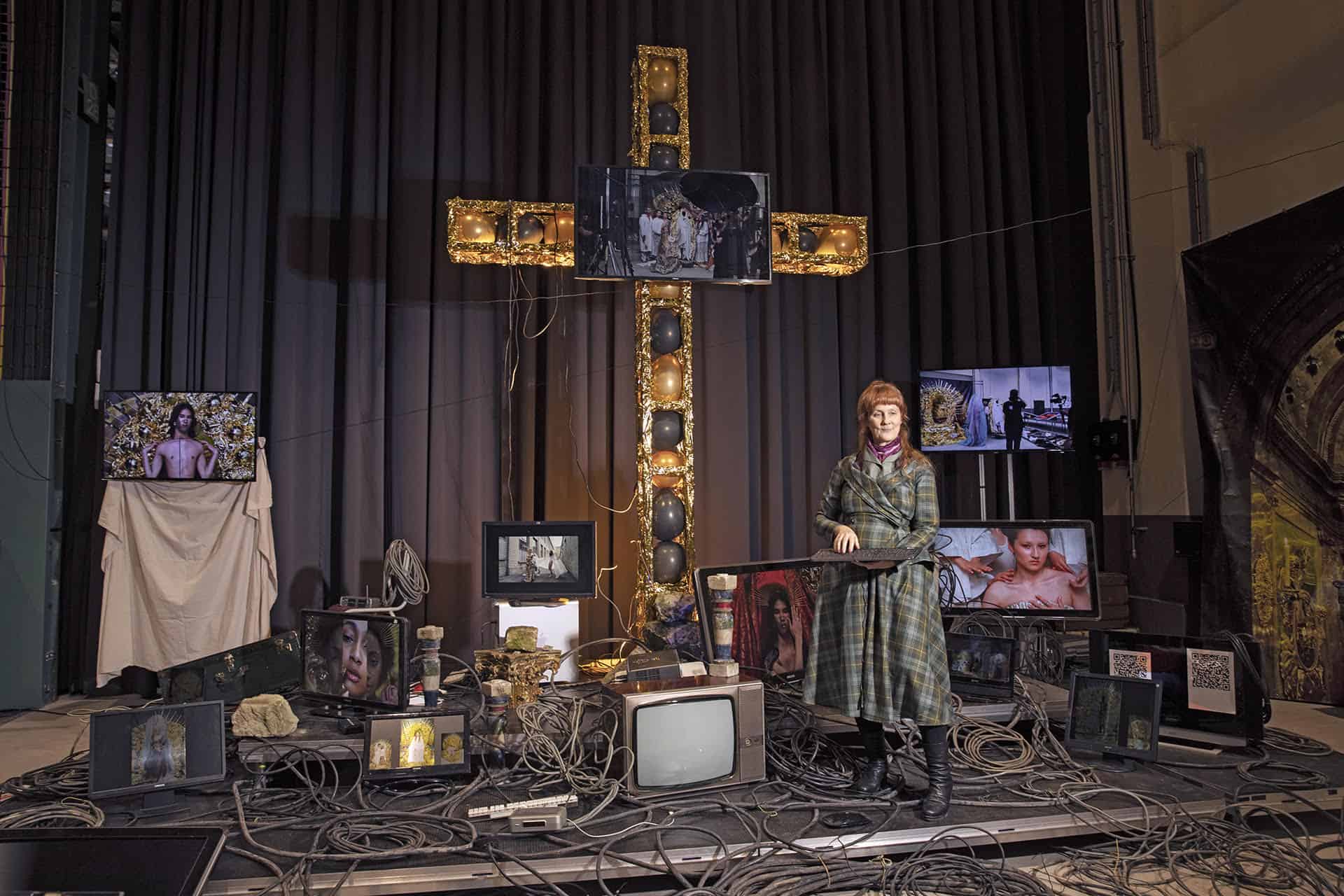
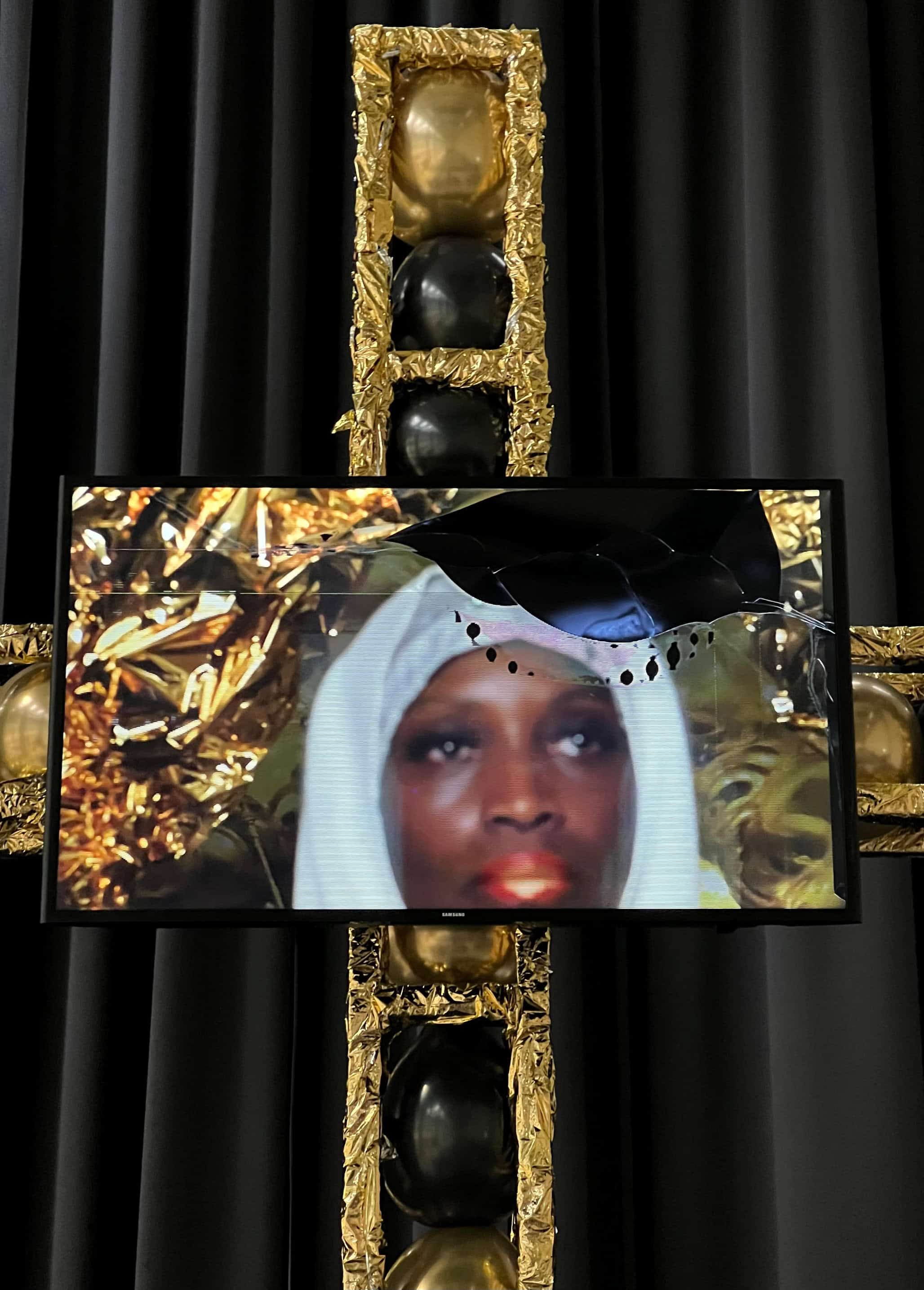
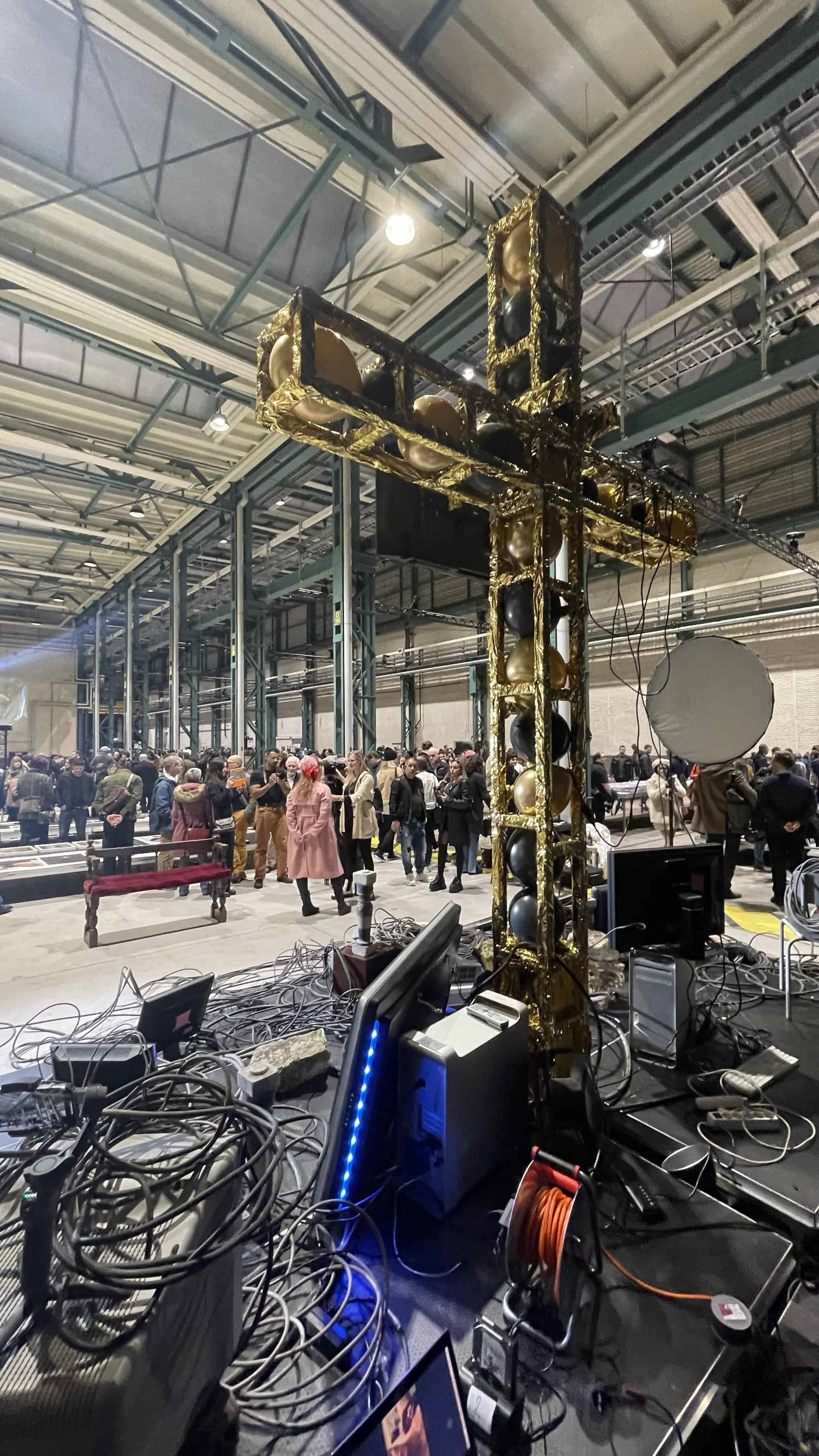
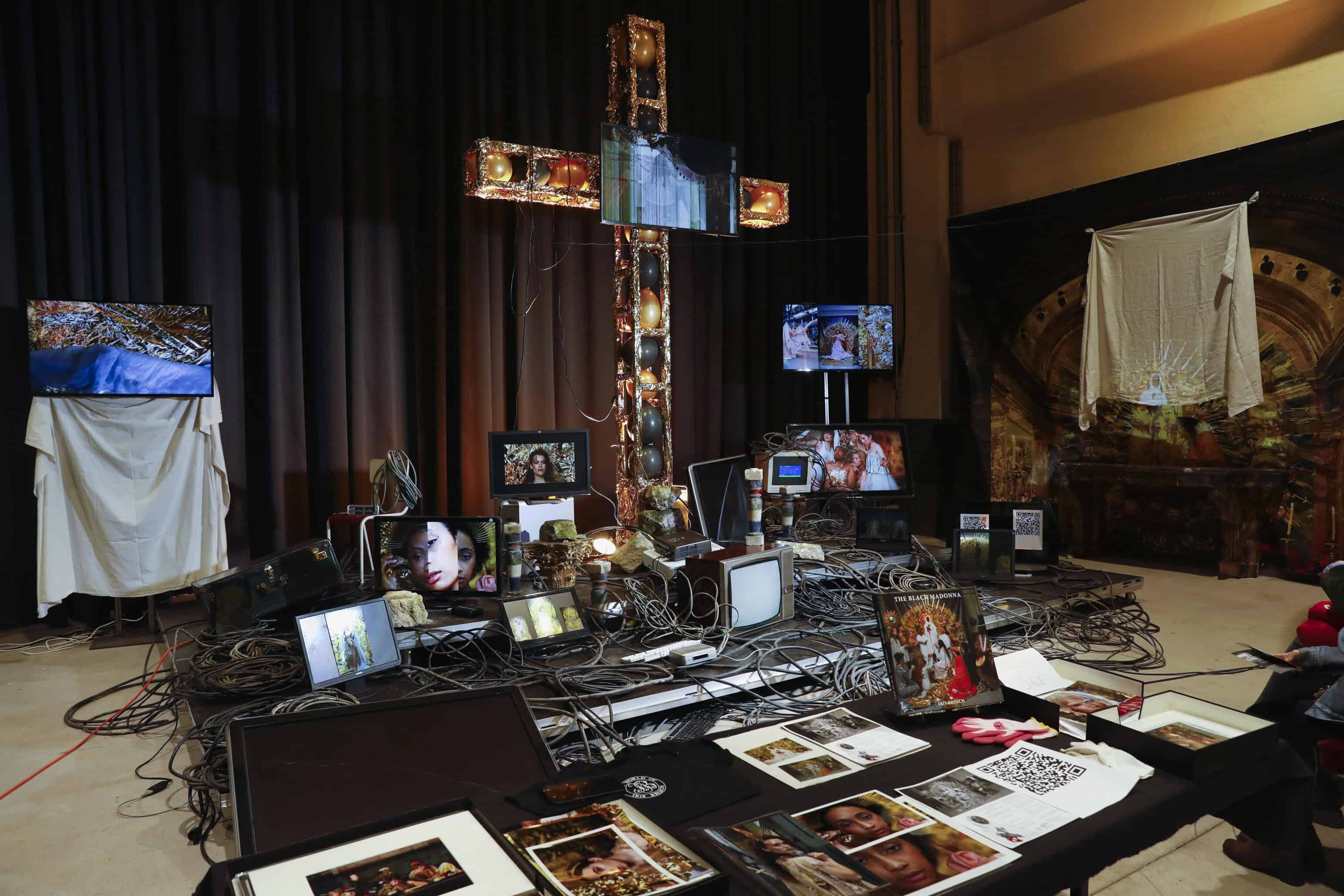
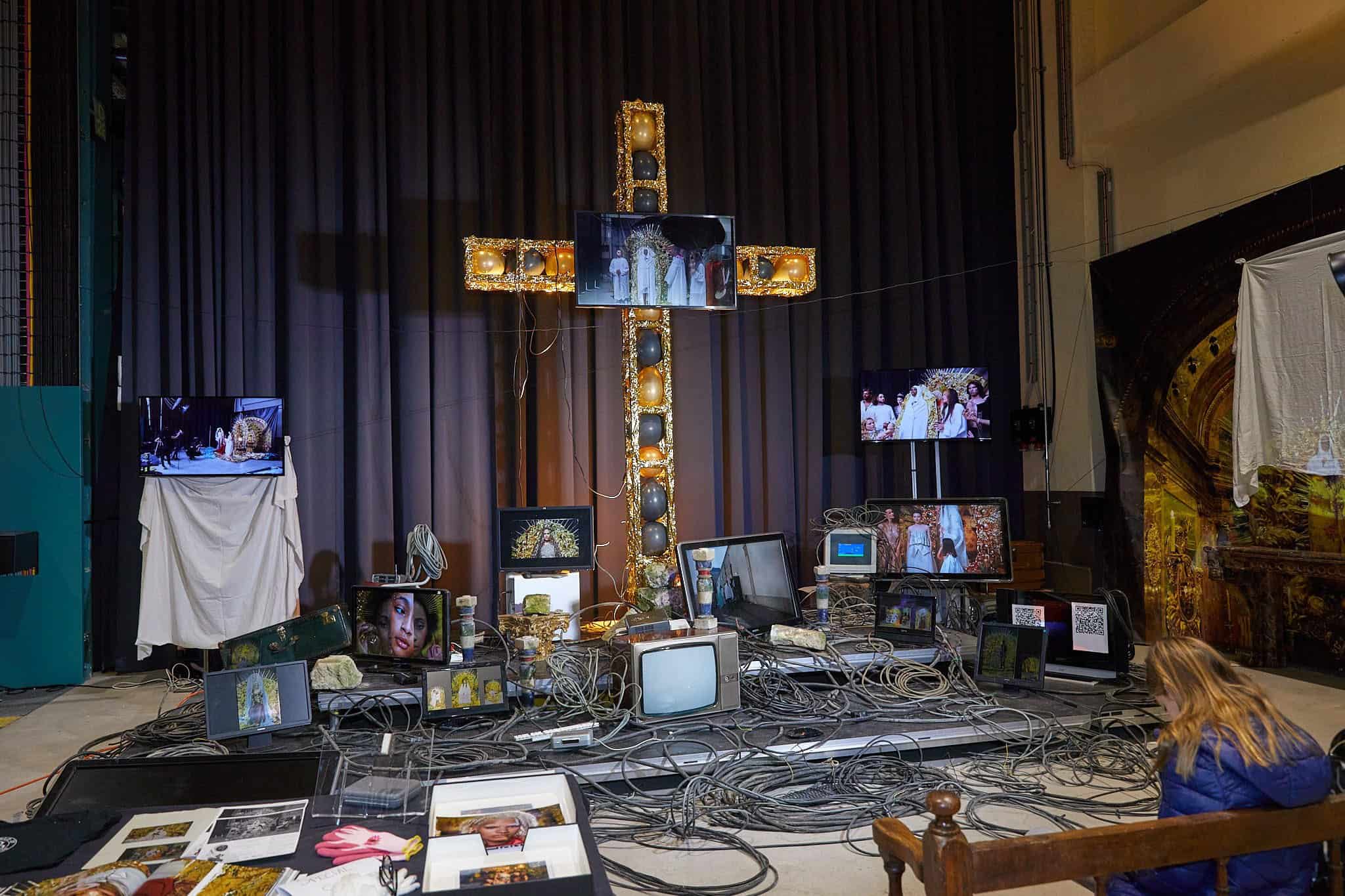
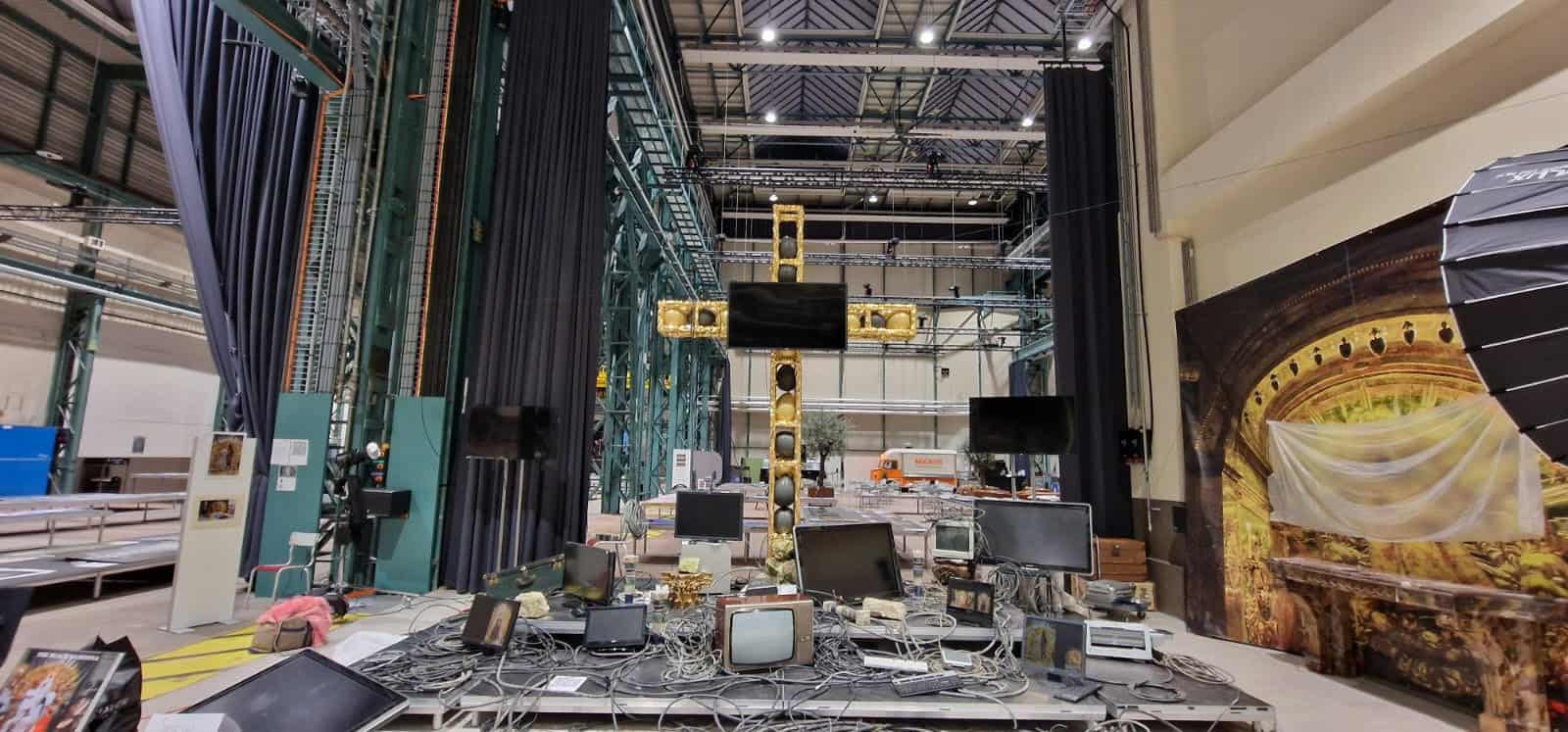

Behind the scenes “Die Schwarze Madonna” photoSCHWEIZ, Zurich 2022 by Iris Brosch
CREDITS PHOTO SCHWEIZ 2022
@photo_schweiz
ARTIST: Iris Brosch
@irisbrosch @irisbrosch_art @theworldofirisbrosch
PRODUCTION: IBBS Production ibbsproduction@gmail.com
Stéphane Blanc @antiquesshopping
CASTING: Visage International Management (Visagemodels Zurich) with special thanks to Zineta Blank @visagemodelszurich @zinetastyle
BLACK MADONNA: embodied by cultural activist MARIETA KIPTALAM @soul_mary_tv www.soulmary.ch
GRAND COUTURIER & MAÎTRE D‘ART: Franck Sorbier@francksorbier
MODELS:
Alessio Ngu @alessiongu Alison Noa Uetz @alison.uetz
Andrej Davidovic @theblondestorm
Angela Elizaveta Robinson @angelaelizavetarobinson Assan Sowe @officialassan
Beat Gugler Beata Fortuna
Cascal Herrle @calu.gray Chantal Fritschi @chantalfritschi Christoph Hauser CHoictures Cinzia Venafro
Darius Fischer @darius.der.fischer Davide Piediscalzi @dvincide
Dineo Schumacher @dineoschumacher Efe Imaze
Jairo N‘tango @jairontango Juan-Luis Konitzer
Katrin Dittli @evavekat Katrina Roelle @katrina.roelle Keita Dramane
Lin Hua @tao3yan4
Marcello Wick https://www.stimmpro.ch
Nicole Lucy Schenh @nicolucyy
Sandra Jahn @sandrajahn108 @scoutmodel1 Teresa Guillet @guiter_
Tetiana Pezun Yael Sonderegger
Zymon Jompon Chaiyasit @zymonchaiyasit
TEAM:
SET DESIGN: Stéphane Blanc @antiquesshopping; Peter Pfund @peter.pfund ARCHITECTURE DESIGN: Barbara Staib @art_above_1822
STYLING: Chaya Neomi Gamliel @neomiegamliel
Body painting by Cynthia Fleischmann @bodypaintography
MAKEUP AND HAIR: Anamarija Ivos @anamarijaivos; Michelle Oberholzer @michelle_m_elle_oberholzer; Nina Tatavitto @nina_tatavittomakeup
MUSIC: Marcello Wick https://www.stimmpro.ch; Keita Dramane
PHOTOGRAPHIC SUPPORT: Dario Zimmerli @dariozimmerli; Fabienne Bühler @fabiennebuhlerfotografie; Andrew Badenhorst; Andrea Carmen @andrea.camen; Natalie Macorig @nataliemacorig
VIDEOGRAPHER: Sebastian Lendenmann @scrolling_pause BOOK LAYOUT and ASSISTANT: Fabienne Schmid @phabie_ls EDITOR: Mariya Semenenko
IT SUPPORT: Joris Chapman @chap_joris; Nils Chapman @nils_chap
SPECIAL THANKS TO:
set lights furniture by Dedotec Schweiz GmbH @dedotecschweiz
Mantel AG http://www.mantel.ch
Kloster Einsiedeln @kloster_einsiedeln
Share this post

